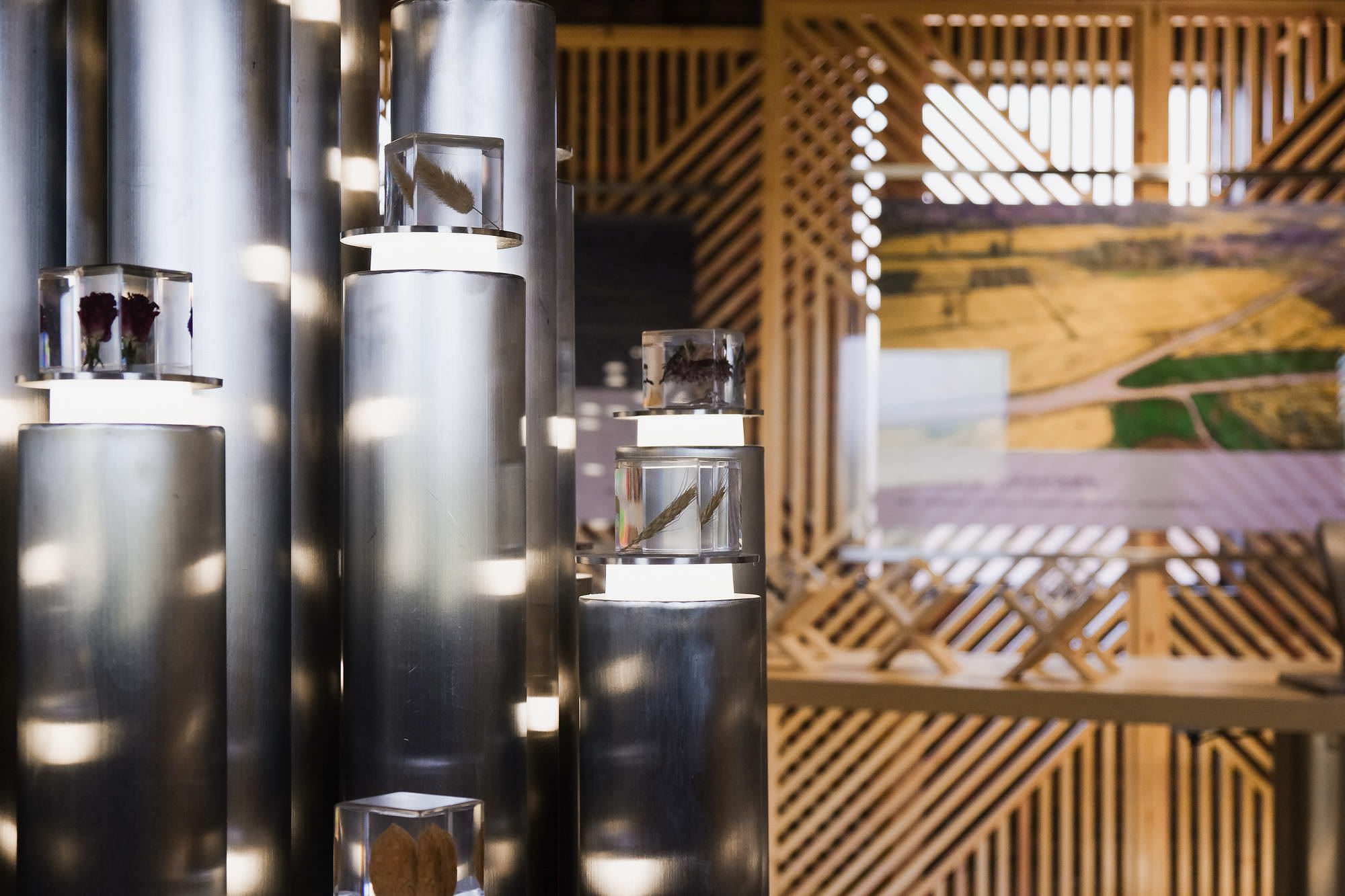
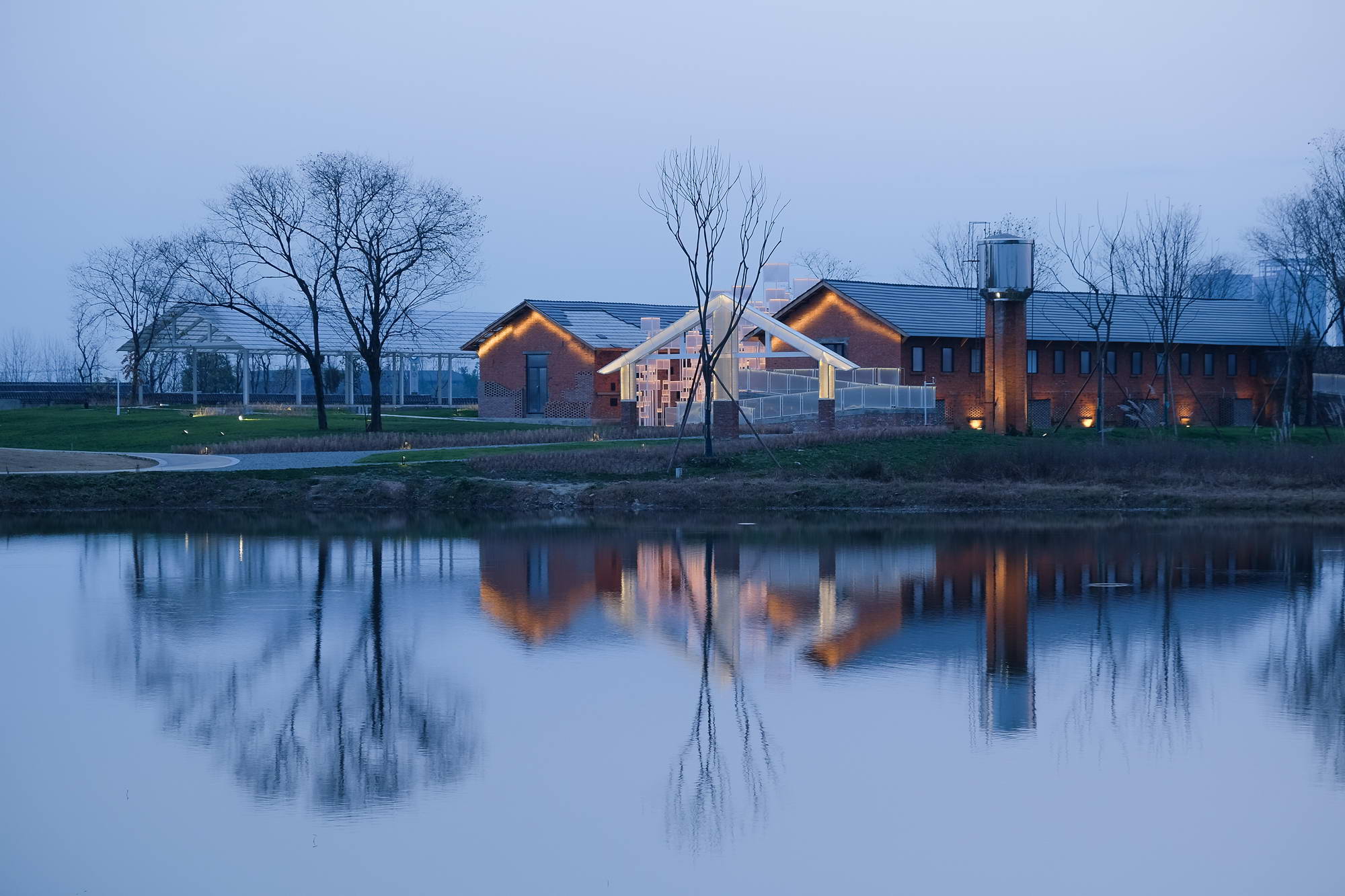
▲ 池塘中倒映的建筑画卷
万物在时间里流动,流动的过程形成历史。凝固不语的建筑也在时间里流动,流动的过程形成地方的历史。在其间建筑师们寻找过去与现在的平衡点,交出面对未来的答卷。
All things flow in time, and the process of flow forms history. The frozen architecture also flows in time, and the flowing process forms the history of the site. During this period, architects seek for the balance between the past and the present, and hand over the answer to the future.

▲建筑与周边公园、农田、树林的关系
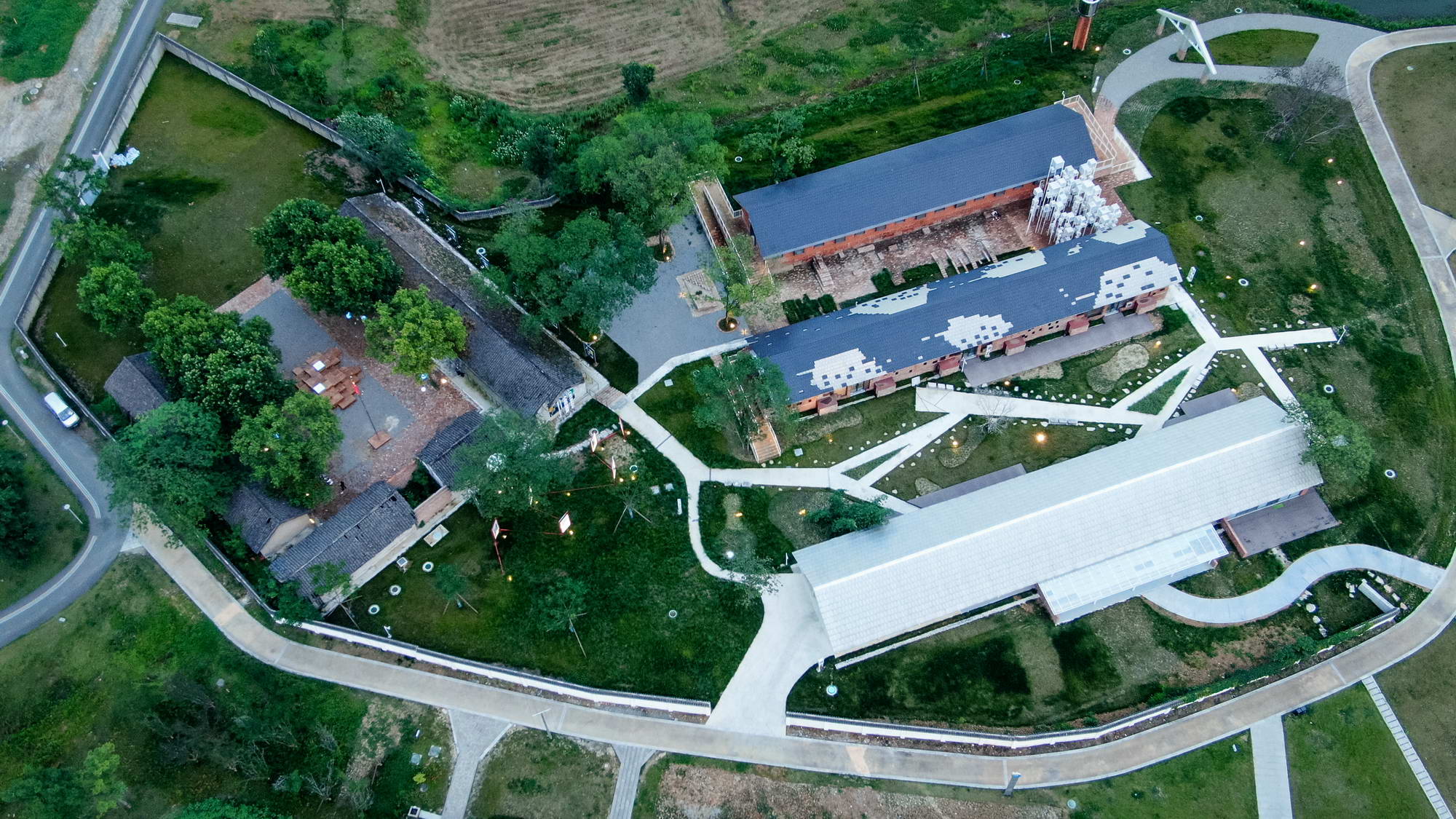
▲建筑与周边公园、农田、树林的关系
成都环城生态公园·农业科普教育基地坐落于成都青龙湖湿地公园二期内,小隐建筑接到业主的设计委托任务,将原有的建筑转变成供游客参观的农业科普教育基地。原建筑是废弃的青龙湖小学和一个养殖场,典型的红砖房。由于场地已被规划为湿地公园,这一片废弃的建筑也急需转换身份,迎接来公园游玩的游客。期待通过设计的力量让衰败的红砖房焕发新的生机与活力。
Chengdu City Ecological Park · Agricultural Science Popularization and Education Base is located in the second phase of Chengdu Qinglong Lake Wetland Park. Archermit has been entrusted by the owner to transform the original building into an agricultural science popularization and education base for visitors. The original buildings are the abandoned Qinglonghu Primary school and a breeding farm, typical of red brick houses. As the site has been planned as a wetland park, the abandoned buildings are in urgent need of changing their identity to welcome visitors to the park. We look forward to making the decaying red brick house glow with new vigor and vitality through the power of design.
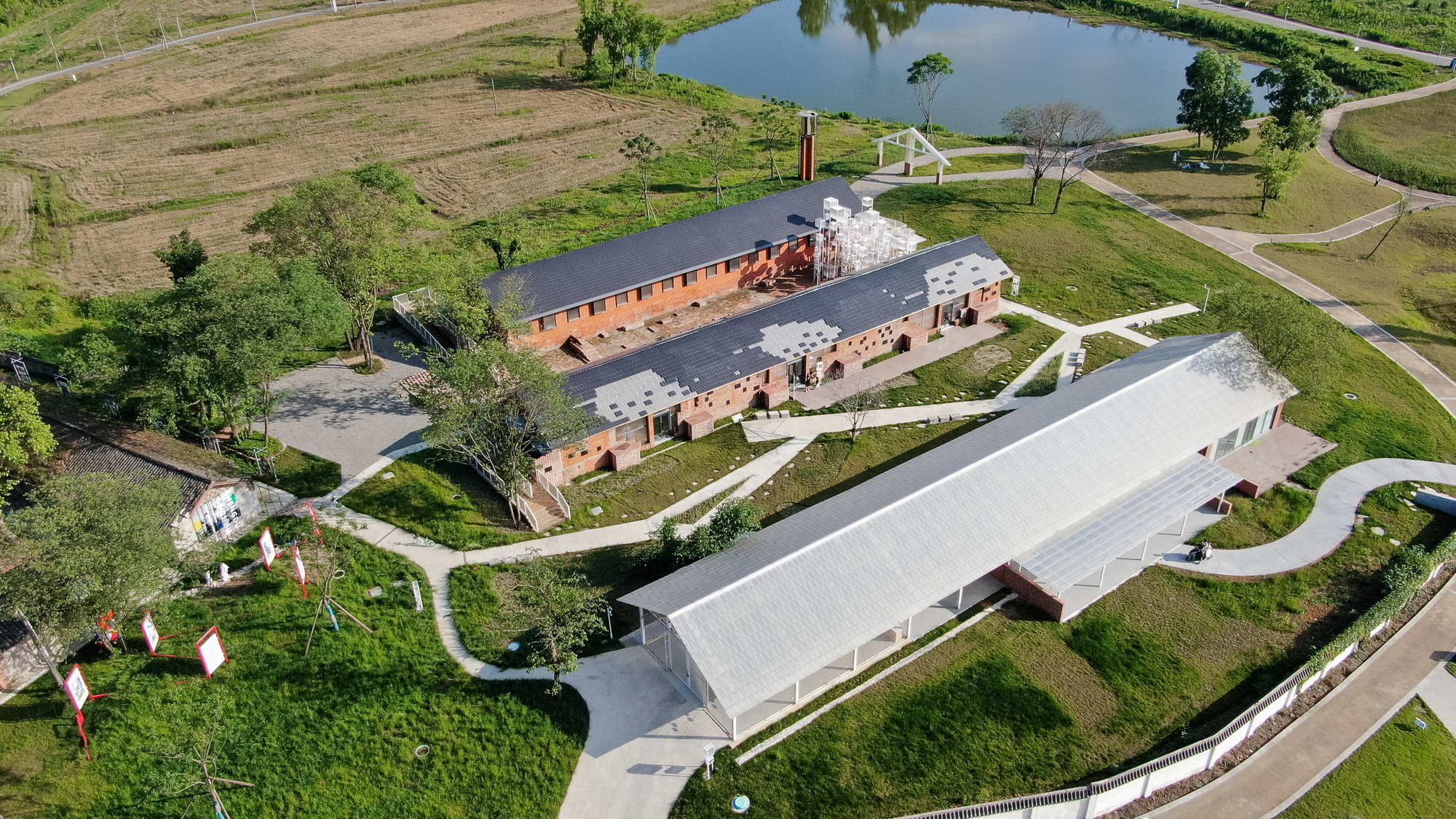
▲新旧交融的建筑群

▲两栋老房子之间的漂浮种子
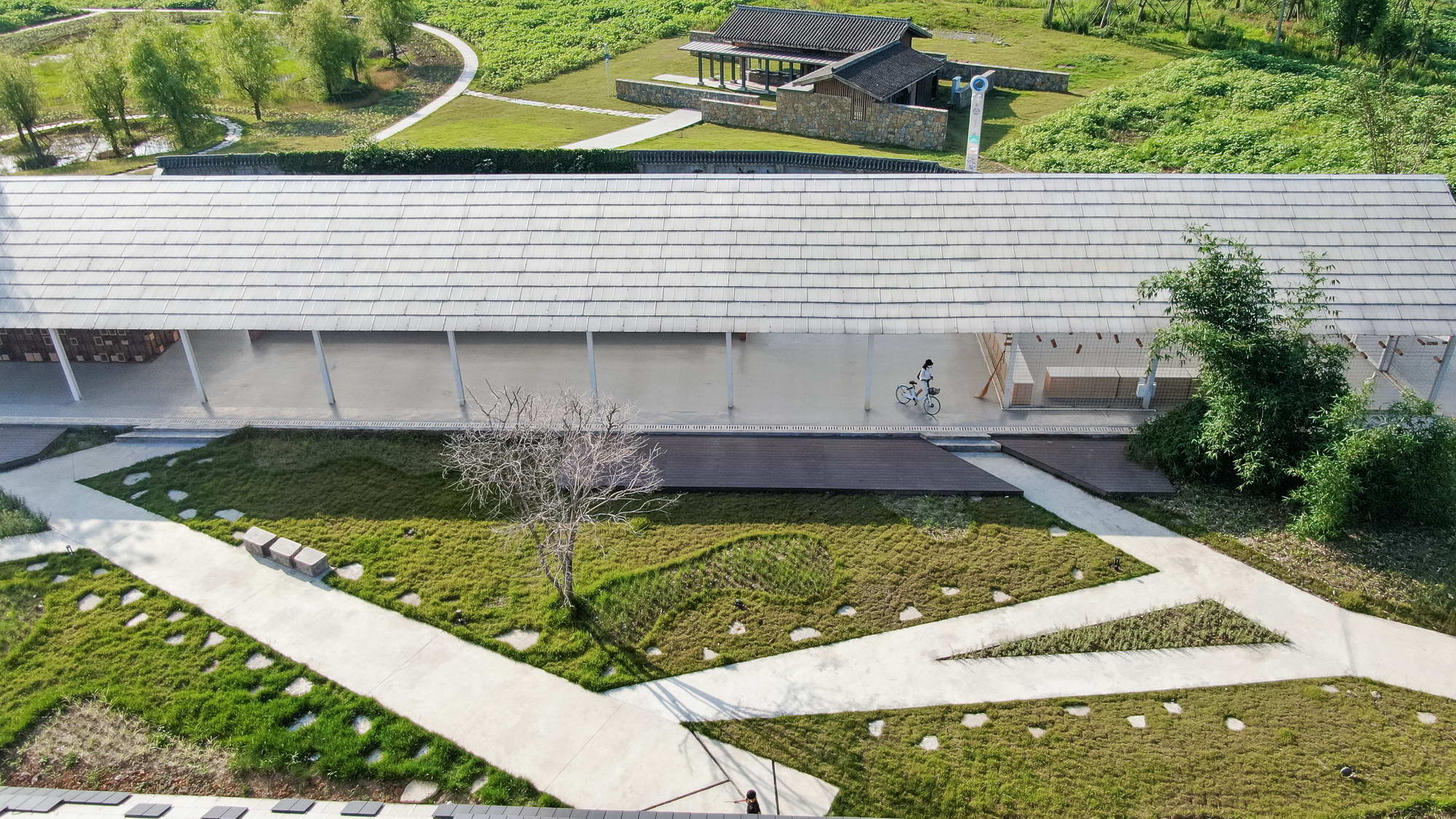
▲废弃的建筑混凝土块再利用到景观
梳理 analyze
自2018年,成都提出“公园城市”新理念和城市发展新方式以来,成都梳理了城市空间,围绕成都绕城高速周边布局,以绿道为线,78座桥梁为点,串联起整个环城生态公园121个特色园,建起自然资源与市民休闲生活之间的便捷桥梁。
Since 2018, Chengdu "park city" put forward new ideas and new urban development mode, Chengdu rearranged the city space around Chengdu beltway, “Green belt” goes through 78 bridges connecting the entire 121 garden ecological park around the city, which built a convenient bridge between natural resources and citizen leisure life.
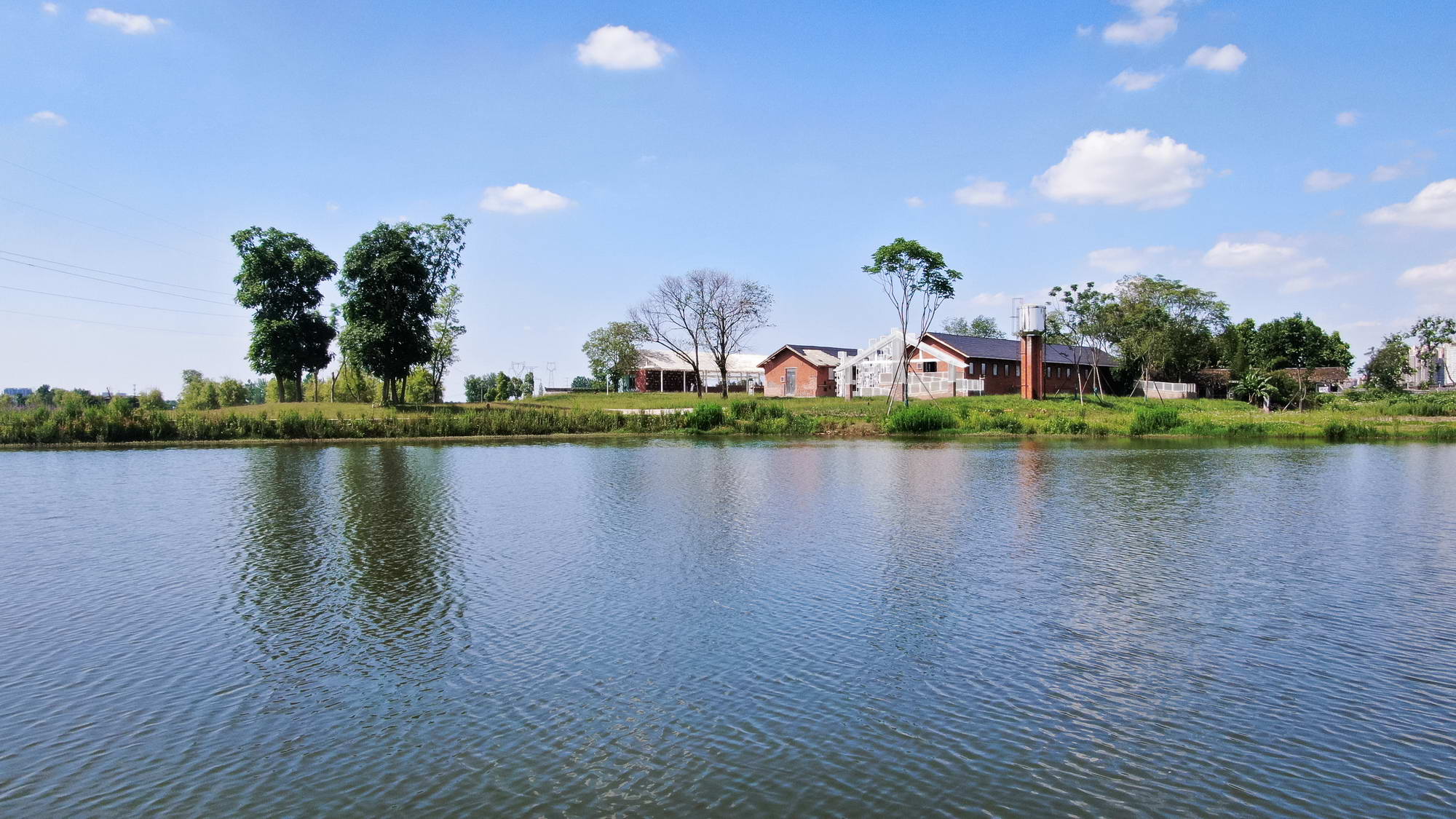
▲坐落在池塘边的建筑
位于环城生态公园内的青龙湖·漂浮种子承载科普、研学、体验的空间需求,于此我们取“万物生长循环”为建筑意象,通过提取农田间农作物的生长状态作为设计元素,采用聚碳酸酯板、陶瓦、红砖等常见材料,让建筑呈现出新旧交替、自由流动的场所气息。
Floating seeds of Qinglong Lake where is located in ecological park has space requirements of the experience of the science and research, in which we take the circulation that everything grows as the architectural image. Through the extraction of farm crop growth status as design elements, adopting the common materials such as polycarbonate panels, ceramic tile, red brick, make construction present a new era, the free flow of breath.

▲围墙拆除后形成自由开放的场地
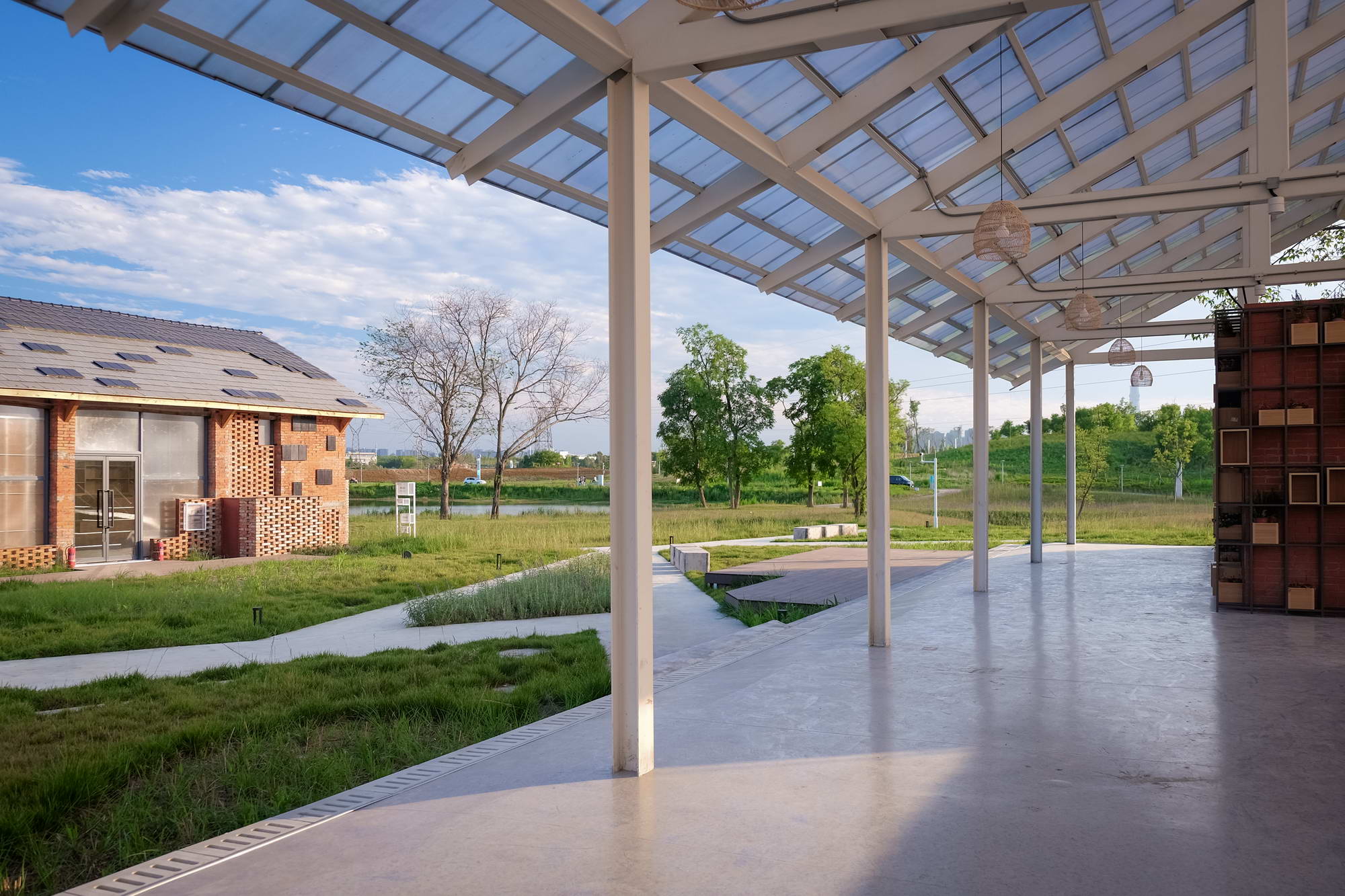
▲公园延伸到庭院里
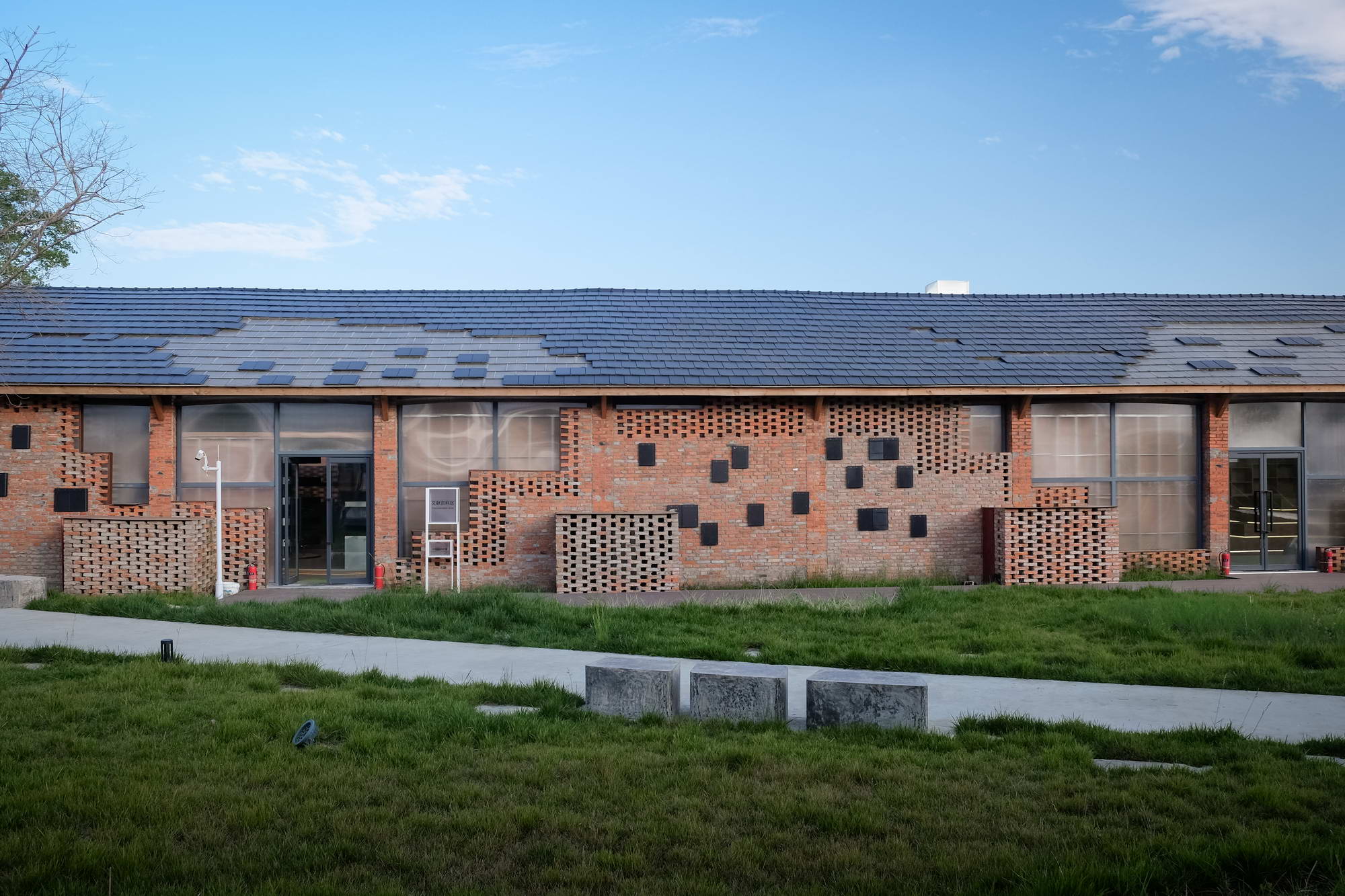
▲旧砖与聚碳酸酯板形成虚实、新旧交织共生的建筑
场地梳理,是城市更新项目的核心环节。“留”与“改”如何平衡,是这类场地现状复杂的项目的重点。建筑方面:部分建筑并未受到较大破坏,修缮后可继续使用;部分建筑墙体破损,屋面破烂,屋顶年久失修,部分结构无法满足使用要求;还有一部分建筑墙柱坍塌、墙体倾斜非常严重,存在极大的安全隐患。
Site analysis is the core of urban renewal project. How to balance "maintain" and "renovate" is the focus of this kind of project with complex site situation. Architecture part: Some buildings were not damaged greatly and could continue to be used after repair. Part of the building walls were damaged, roof disrepair, part of the structure cannot meet the use requirements; There are also some columns collapsed, walls tilted are very serious, there is a great potential safety hazard.
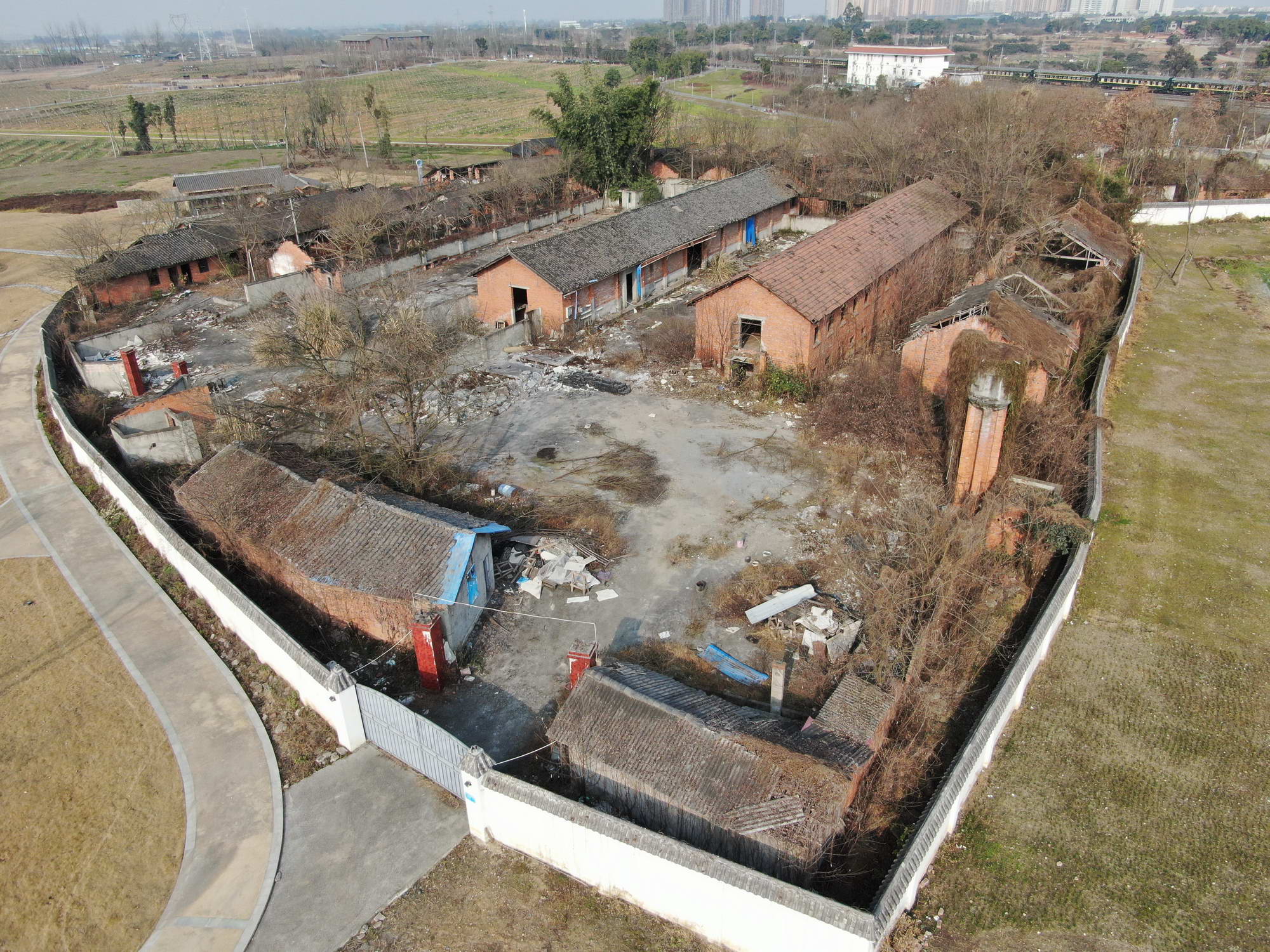
▲改造前养殖场部分保存完好的建筑
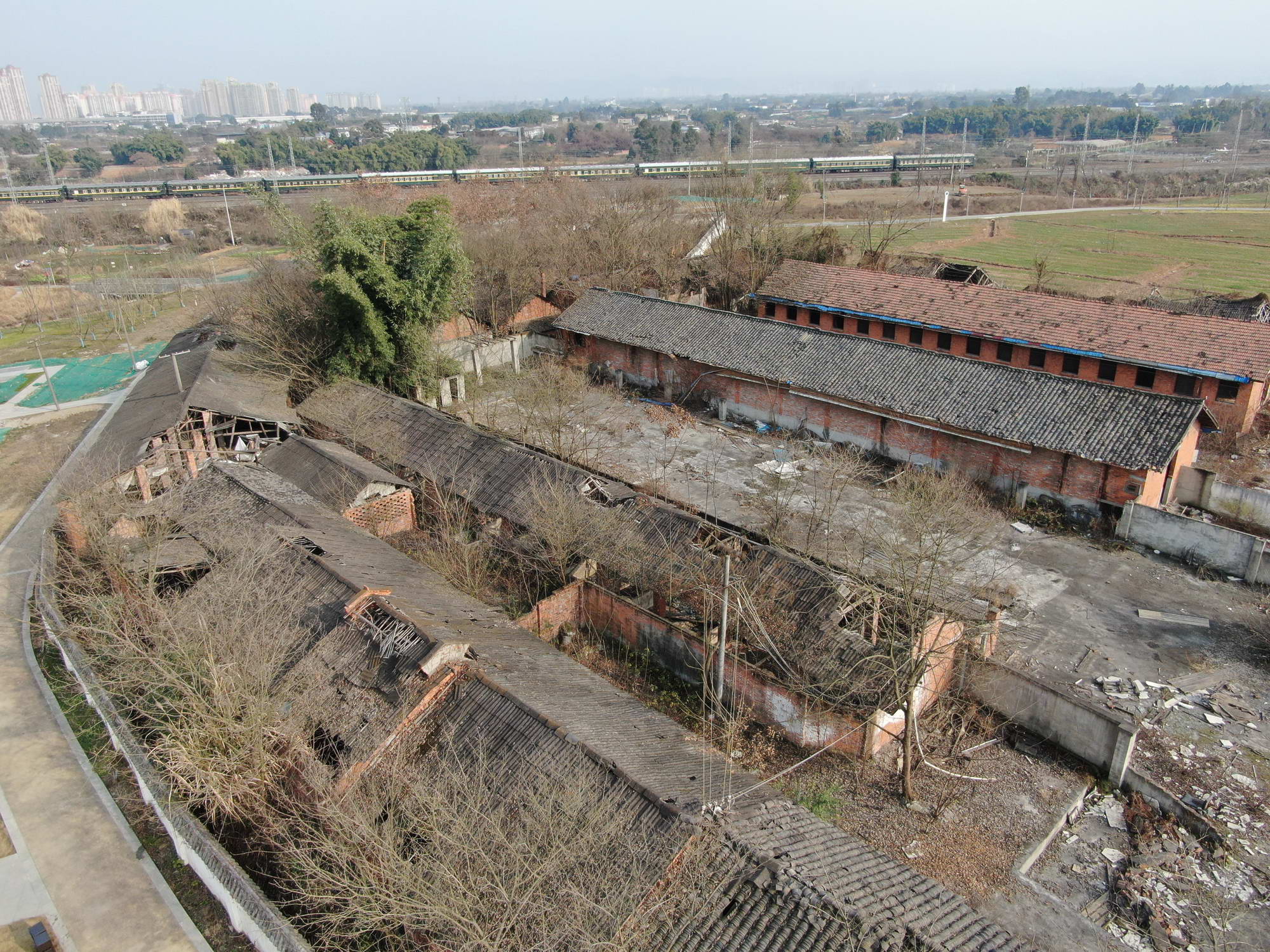
▲改造前养殖场受损严重的建筑
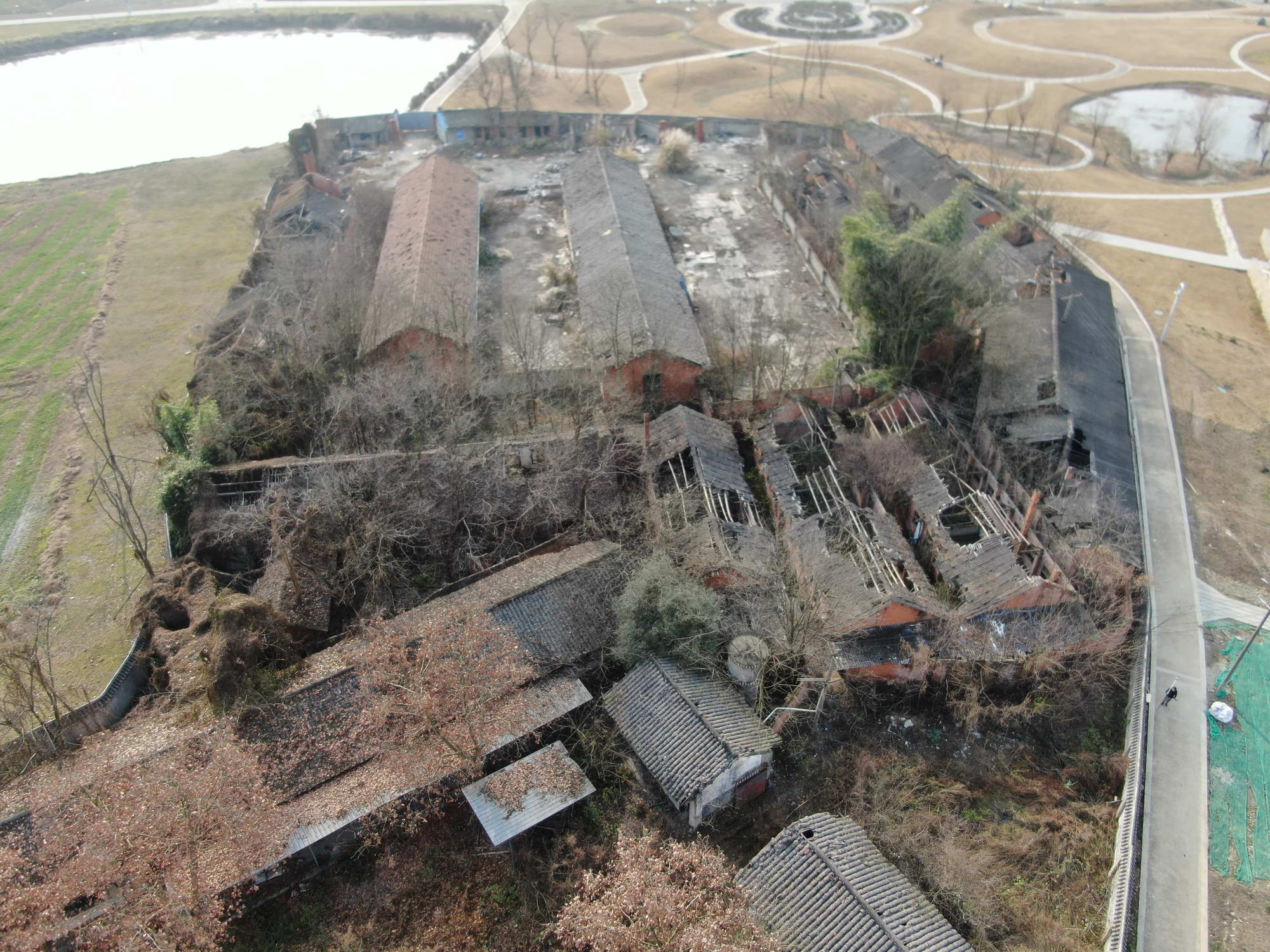
▲改造前养殖场受损严重的建筑

▲改造前小学黑板上的文字
景观方面:场地荒废多年,内部杂草丛生,原有梧桐树长势良好;原硬化路面破损严重;围墙将场地与外部农田、公园完全隔离,影响人们参与体验。
Landscape part: the site has been abandoned for years, the interior is overgrown with weeds, the original plane trees grow well; The original hardened road surface is seriously damaged; The enclosure completely isolates the site from the outside farmland and park, affecting people's participation in the experience.
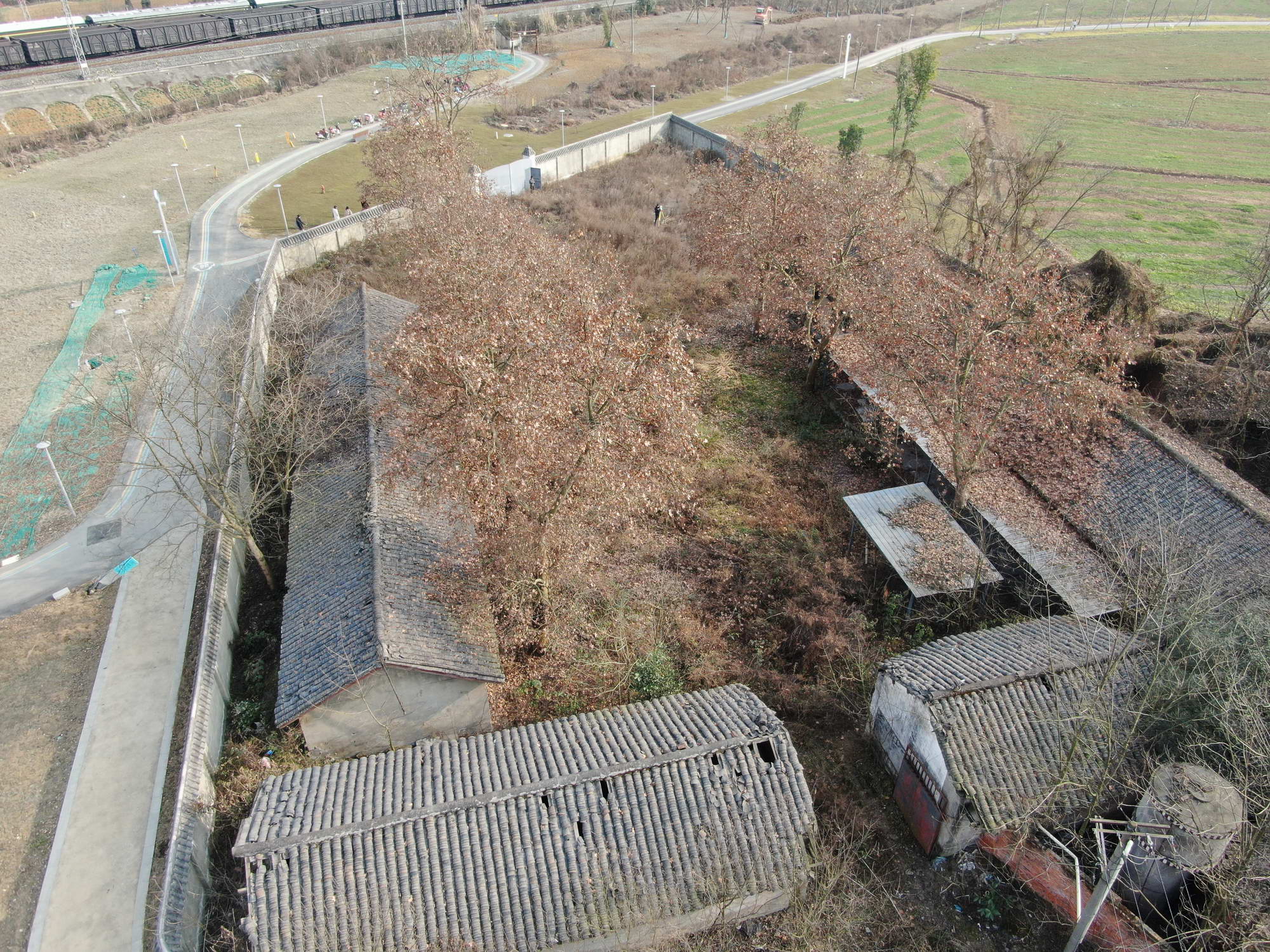
▲改造前小学院内生长态势良好的梧桐
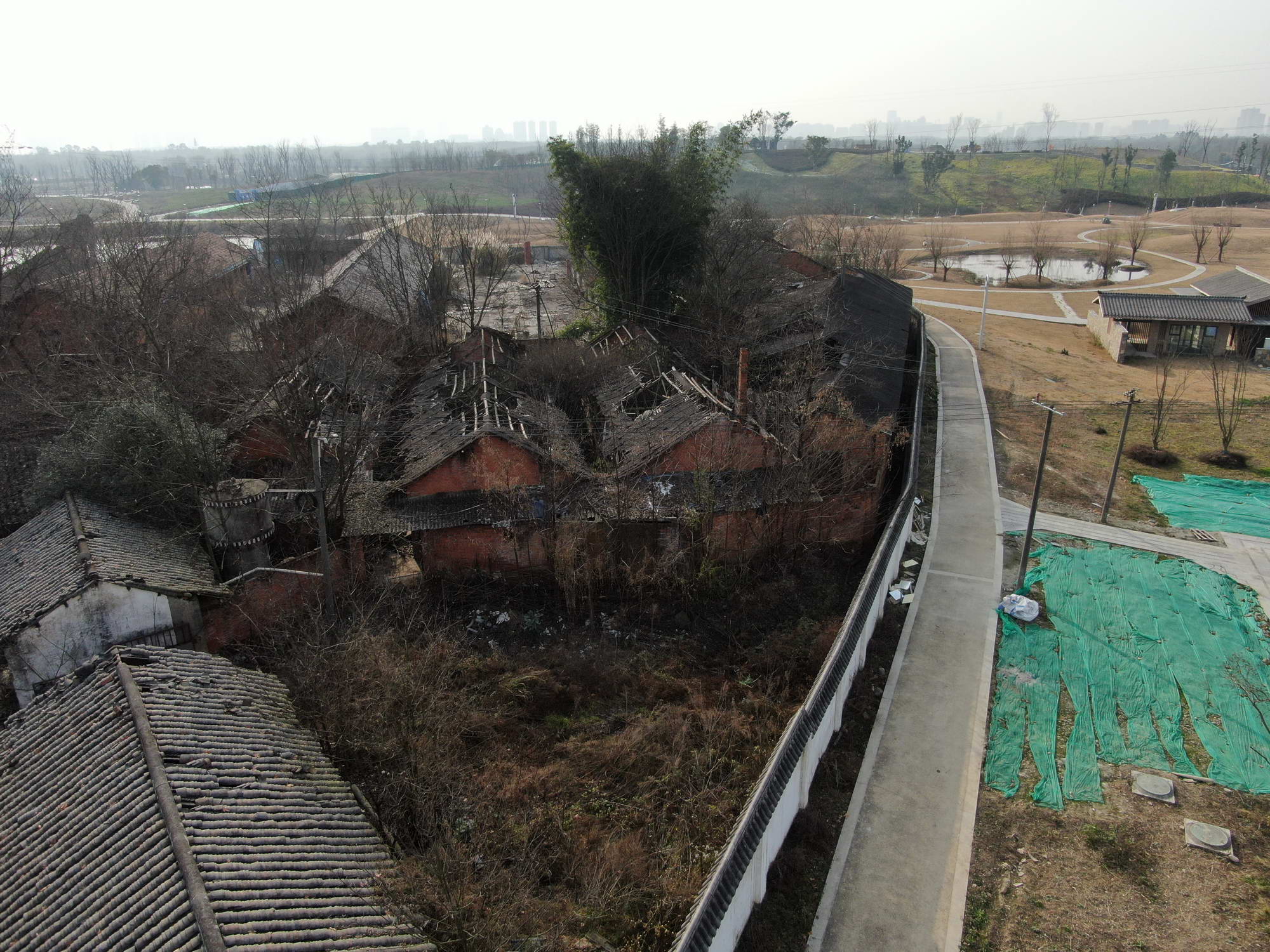
▲改造前小学和养殖场之间杂草丛生的院落
流动 flow
为了让建筑呈现出新旧交替、自由流动的场所气息,在改造设计中,我们让场地以开放的姿态面对即将来临的游客。拆除了原有坍塌的建筑和部分红砖围墙,旧红砖在场地的各个角落流动起来,从竖向的砌墙围挡变为横向的地面铺装,旧砖换了新的方向在场地生长蔓延。废弃混凝土块的应用也是如此,破碎后作为景观汀步。尽可能拆除了原有封闭围墙的场地向游客张开怀抱,吸引着来自四面八方的游客来此参观游览。
In order to give the building a sense of place where the old and the new are alternating and flowing freely, we made the site open to the coming visitors in the renovation design. The original collapsed buildings and red brick walls were removed, and the old red bricks flowed in every corner of the site, changing from vertical wall enclosure to horizontal pavement. The old bricks grew and spread in the site in a new direction. The same is true for the use of discarded concrete blocks, which are broken up and used as landscape stepping stones. Removed the original enclosed walls of the site open to visitors, attracting tourists from all sides to visit this tour.
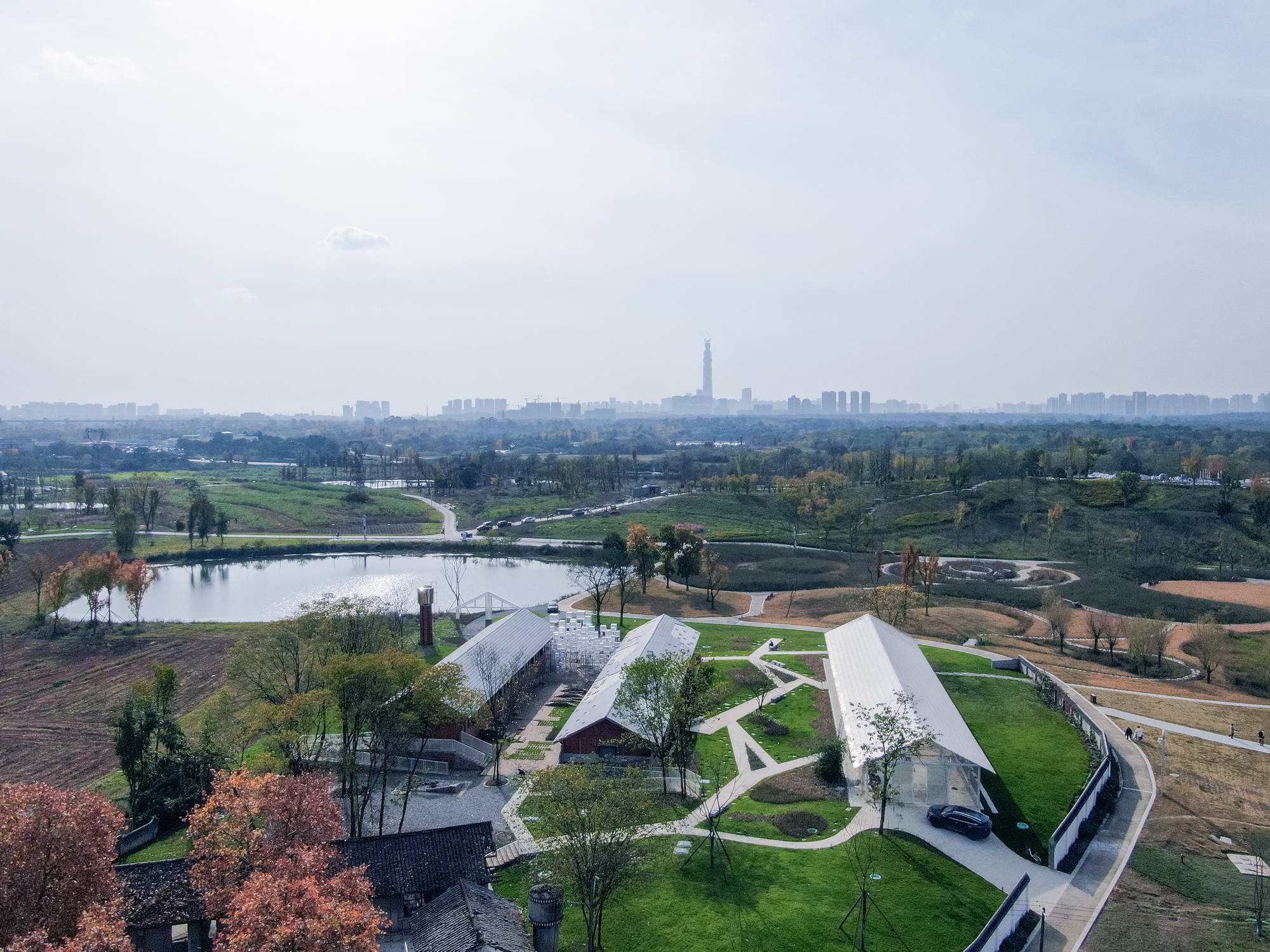
▲拆除了原有坍塌的建筑和部分红砖围墙,场地开敞清爽
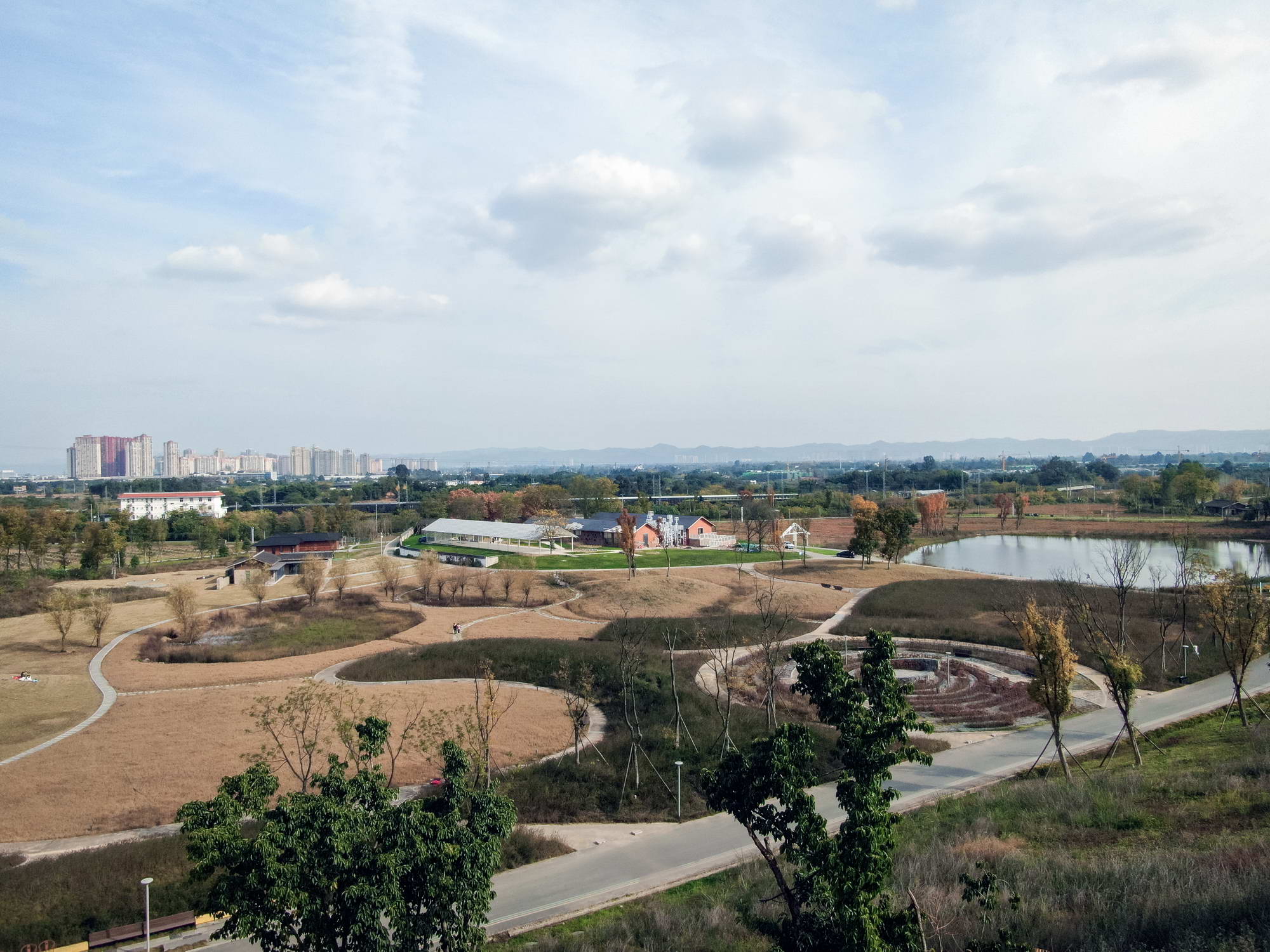
▲围墙拆除后以开放的姿态迎接四面八方的游客
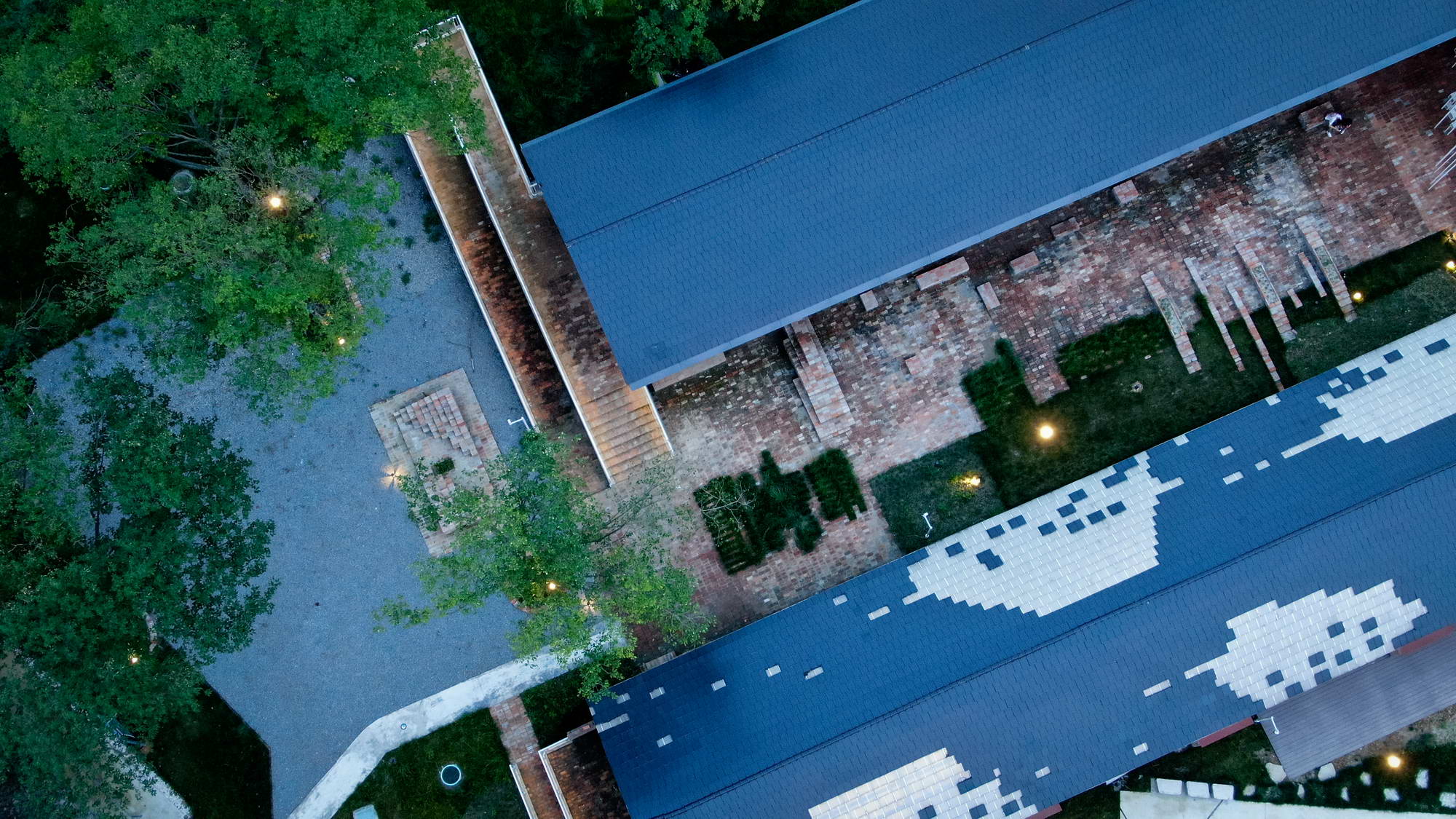
▲地上斑驳的红砖与屋顶虚实的瓦形成共有的空间序列
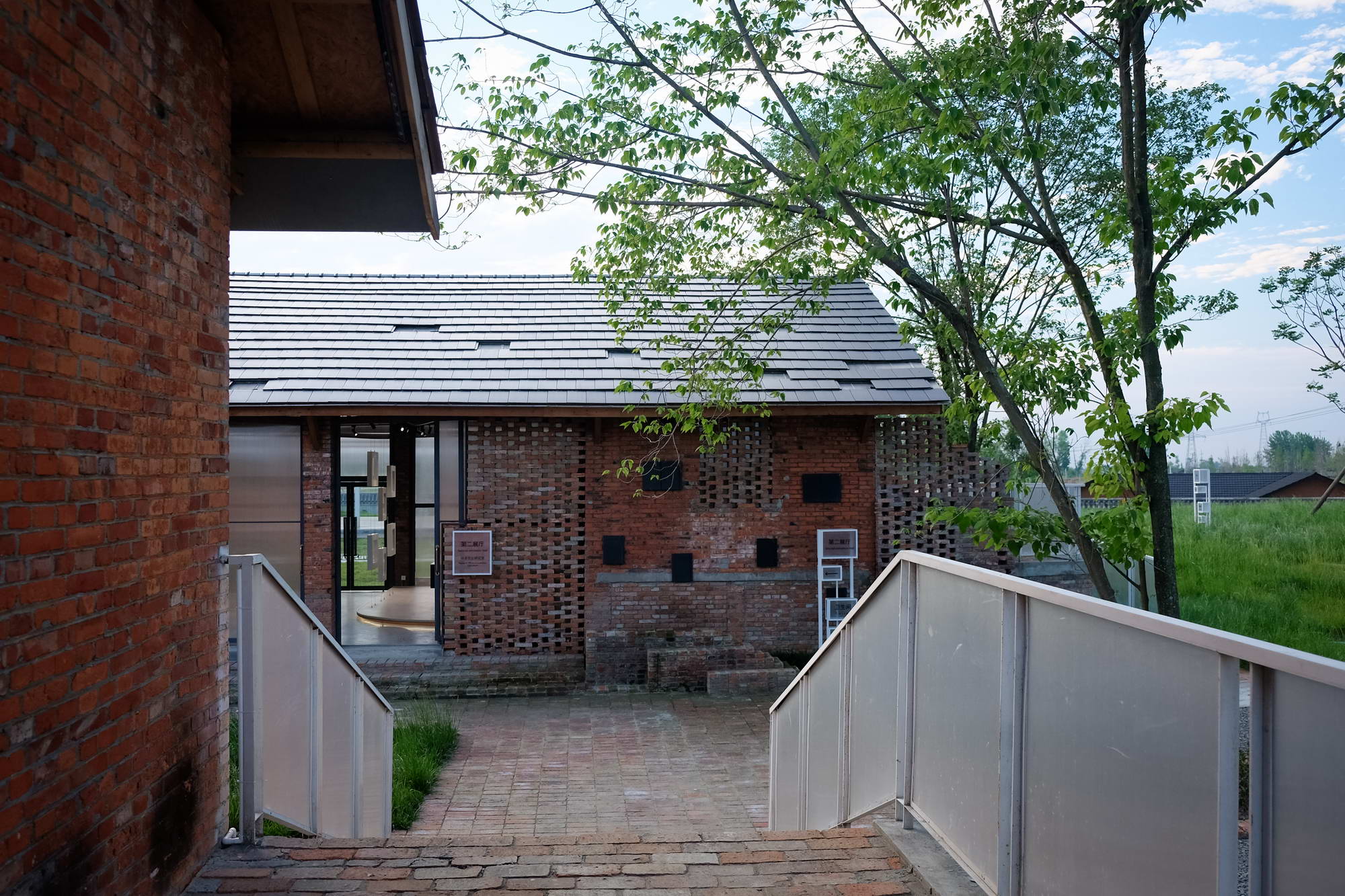
▲竖向砌墙围挡的红砖变为横向的地面铺装

▲旧砖新作的花墙与老房子融为一体
在建筑改造方面,我们注重材质是否与原有建筑匹配和谐,是否经济适用。我们希望改造后的场所更加包容开放,所以也特别注重材质本身是否拥有通透,轻盈的质感。结合场地本身记忆,最终我们选择了聚碳酸酯板、红砖、陶瓦等材料进行了几栋建筑的针对性改造。
In architectural renovation, we pay attention to whether the material is compatible with the original building and whether it is economical and suitable. We hope that the renovated place will be more inclusive and open, so we pay special attention to whether the material itself has transparent and light texture. Based on the memory of the site, we finally chose polycarbonate panel, red brick, terra-cotta tiles and other materials to carry out targeted transformation of several buildings.
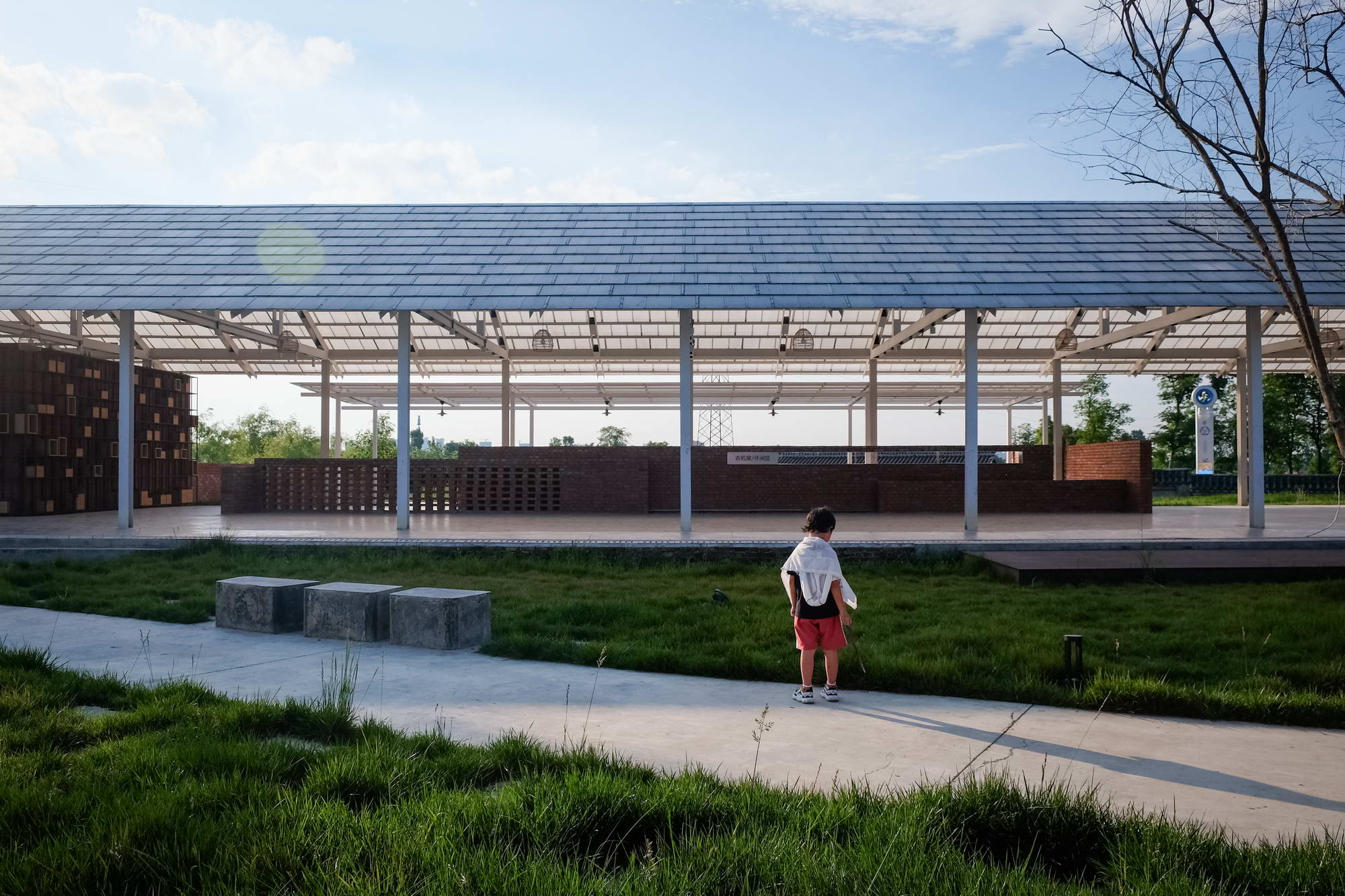
▲轻薄通透的聚碳酸酯板顶棚
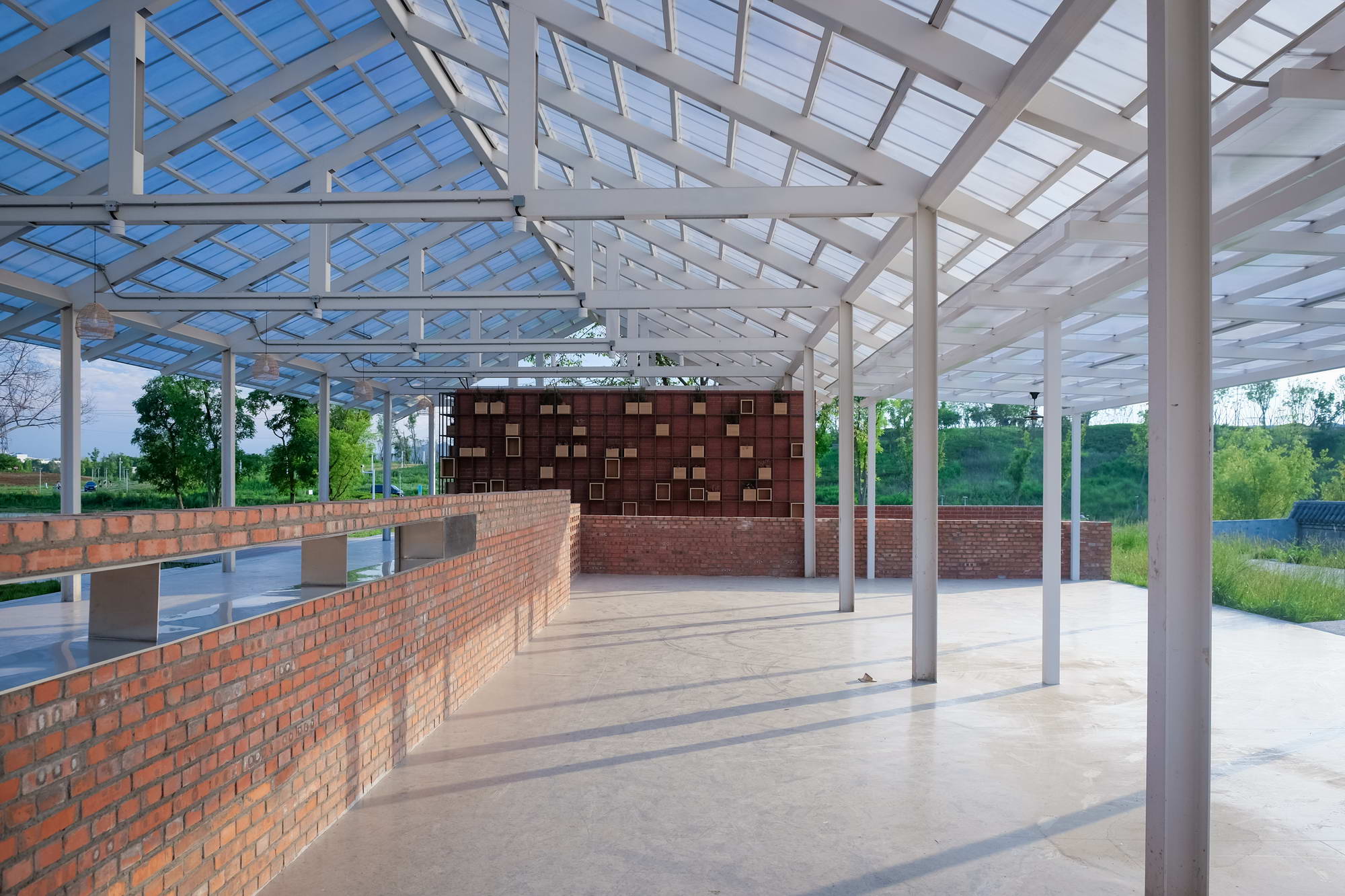
▲聚碳酸酯板营造出朦胧的视觉效果
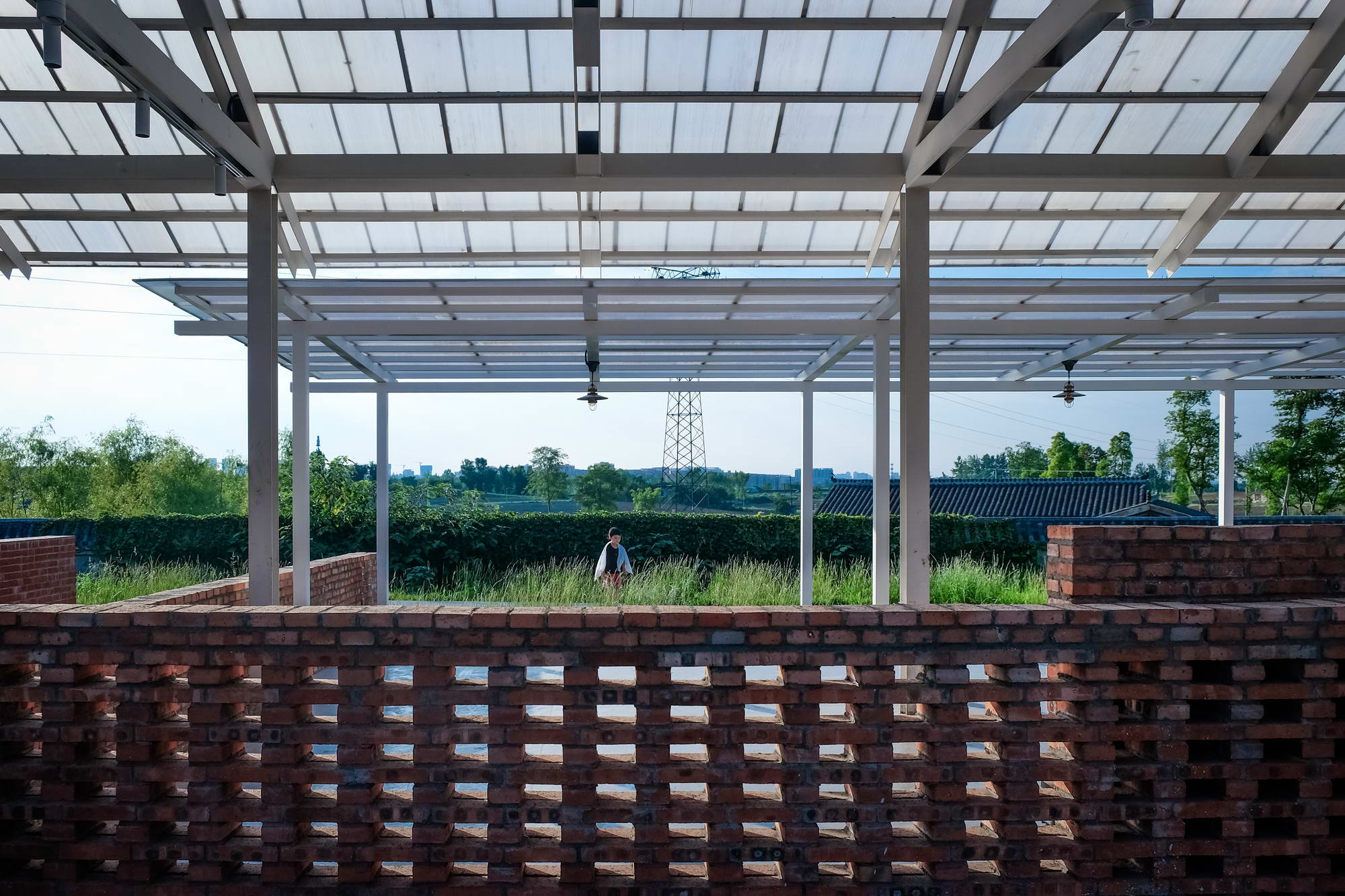
▲红砖墙、聚碳酸酯板、特殊处理的镂空钢构形成统一的格子序列
聚碳酸酯板是在乡村和农业配套设施建筑中应用很广的材料,具有透光、轻质、耐候、阻燃、隔音、高强度等优异性能,而且价格低廉,非常适合低成本低技建筑的应用。红砖和陶瓦都是原有建筑值得保留的血脉和记忆。
Polycarbonate panel is a building material widely used in rural and agricultural supporting facilities, with excellent performance of light transmission, light, weather resistance, flame retardant, sound insulation, high strength, and low price, very suitable for low-cost and low-technology building applications. Red brick and terracotta tiles are the blood and memory of the original building deserve to be maintained.
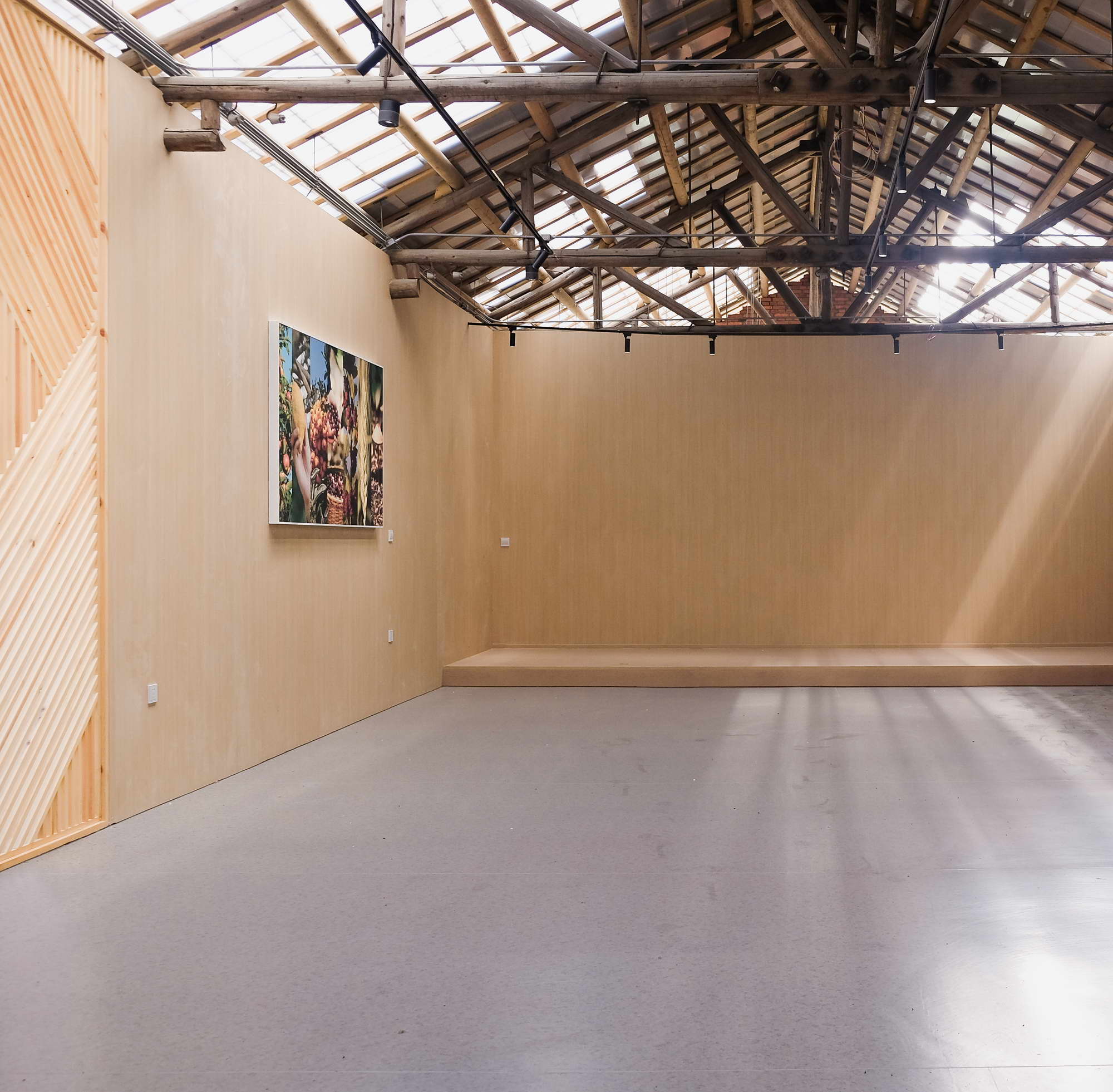
▲阳光透过聚碳酸酯板柔和地进入室内
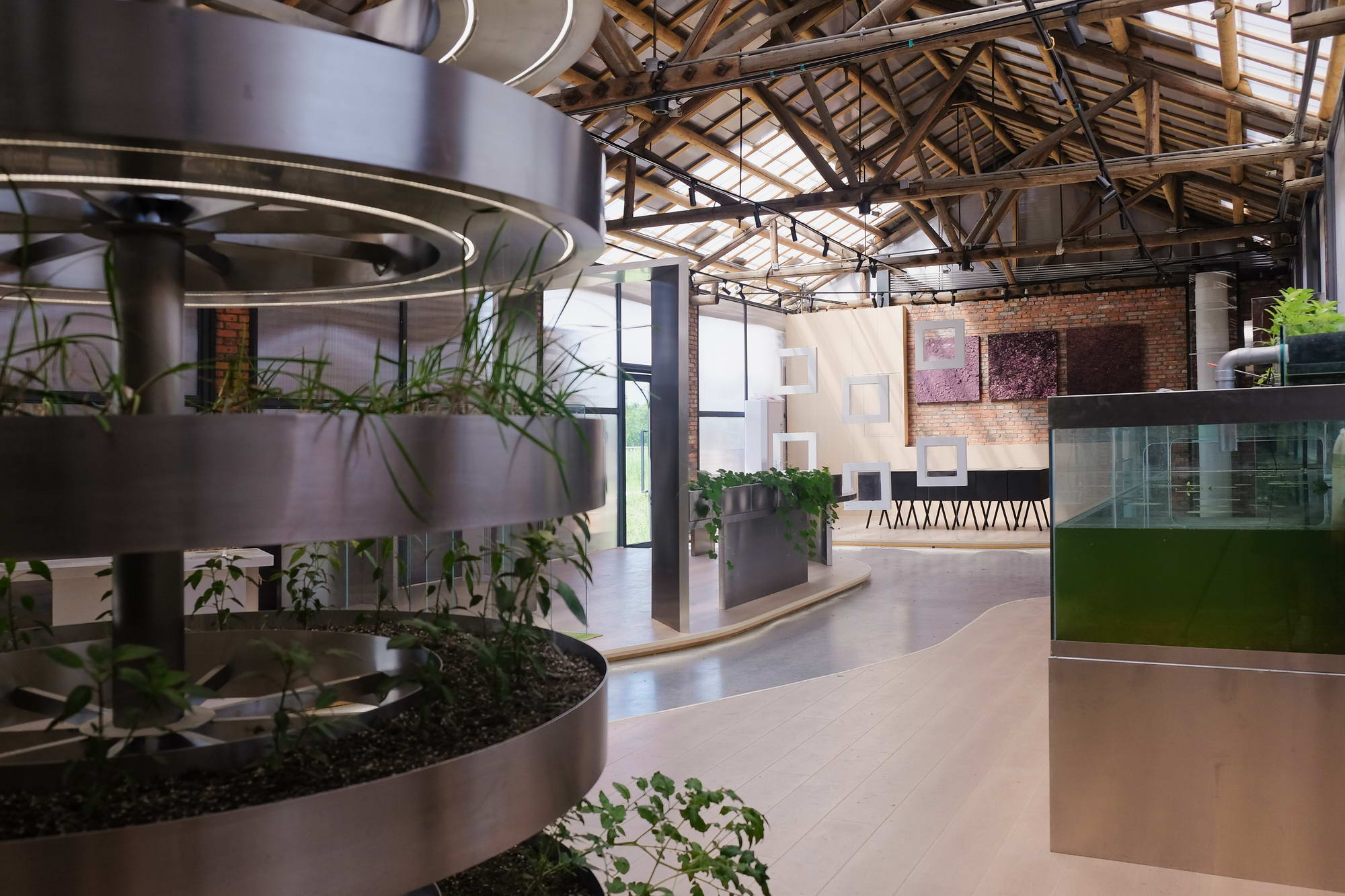
▲局部透光的屋面为农科实验农作物提供适宜的光照
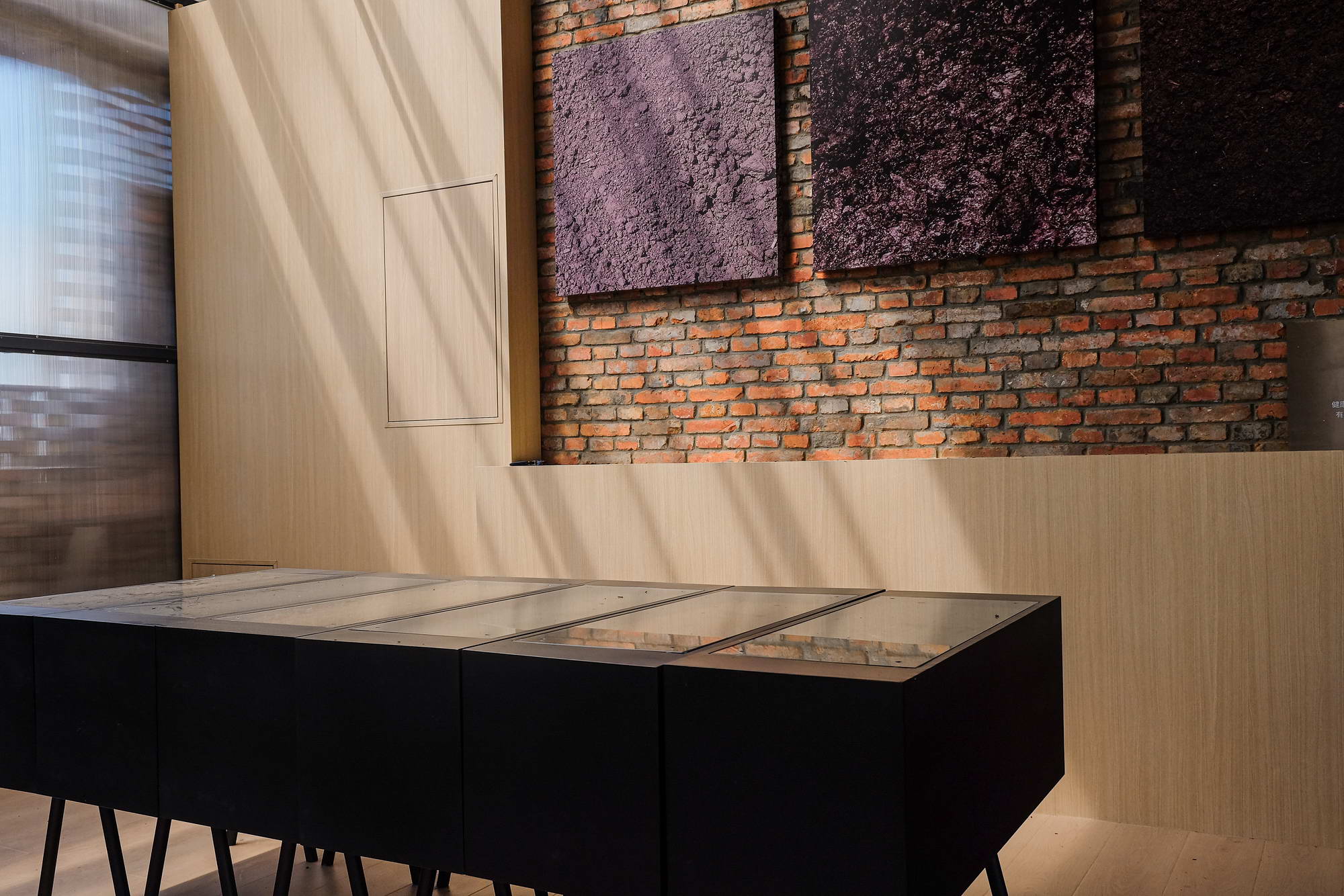
▲阳光从透光屋顶倾泻而下
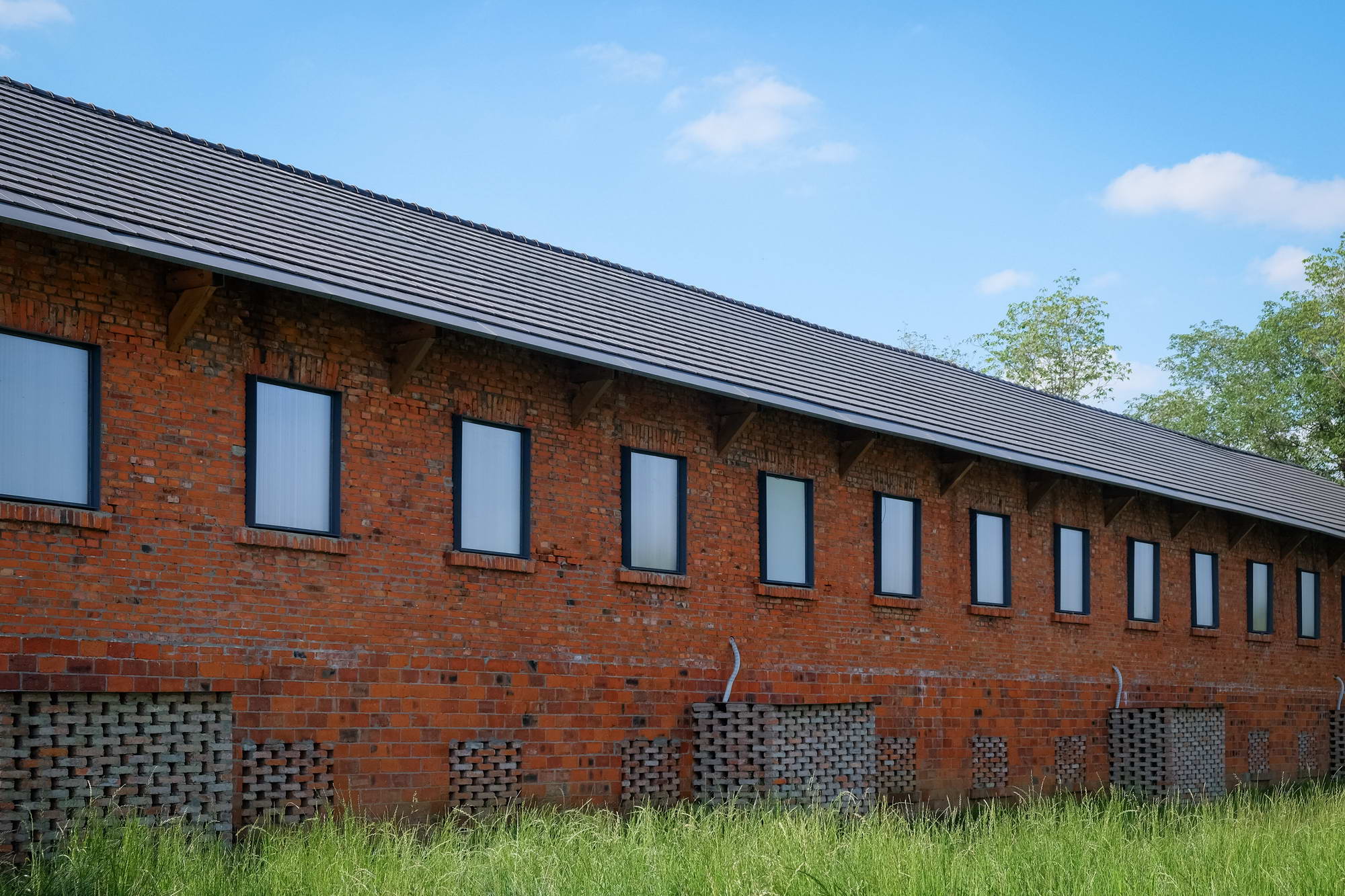
▲新旧红砖、陶瓦、聚碳酸酯窗的新组合
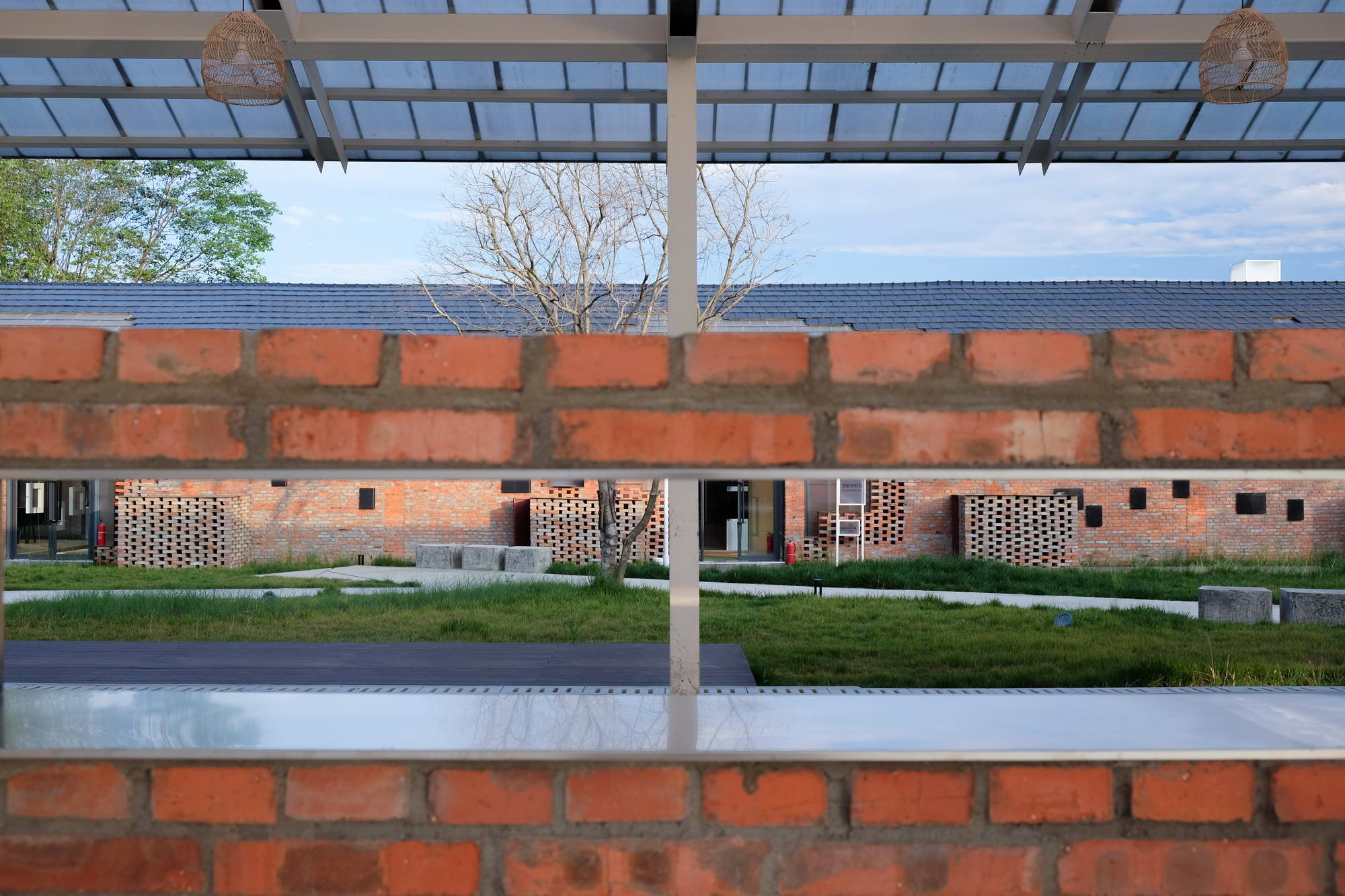
▲材料与构造形成的虚实对比空间
我们将结构塌毁的建筑进行了拆除,在原址新建农机展示棚,透明的聚碳酸酯板与精巧的白色钢构营造了一个晶莹剔透、轻薄柔美的开放空间。
We demolished the collapsed building and built a new agricultural machinery exhibition shed on the site. Transparent polycarbonate panel and delicate white steel structure create a crystal clear, light and soft open space.
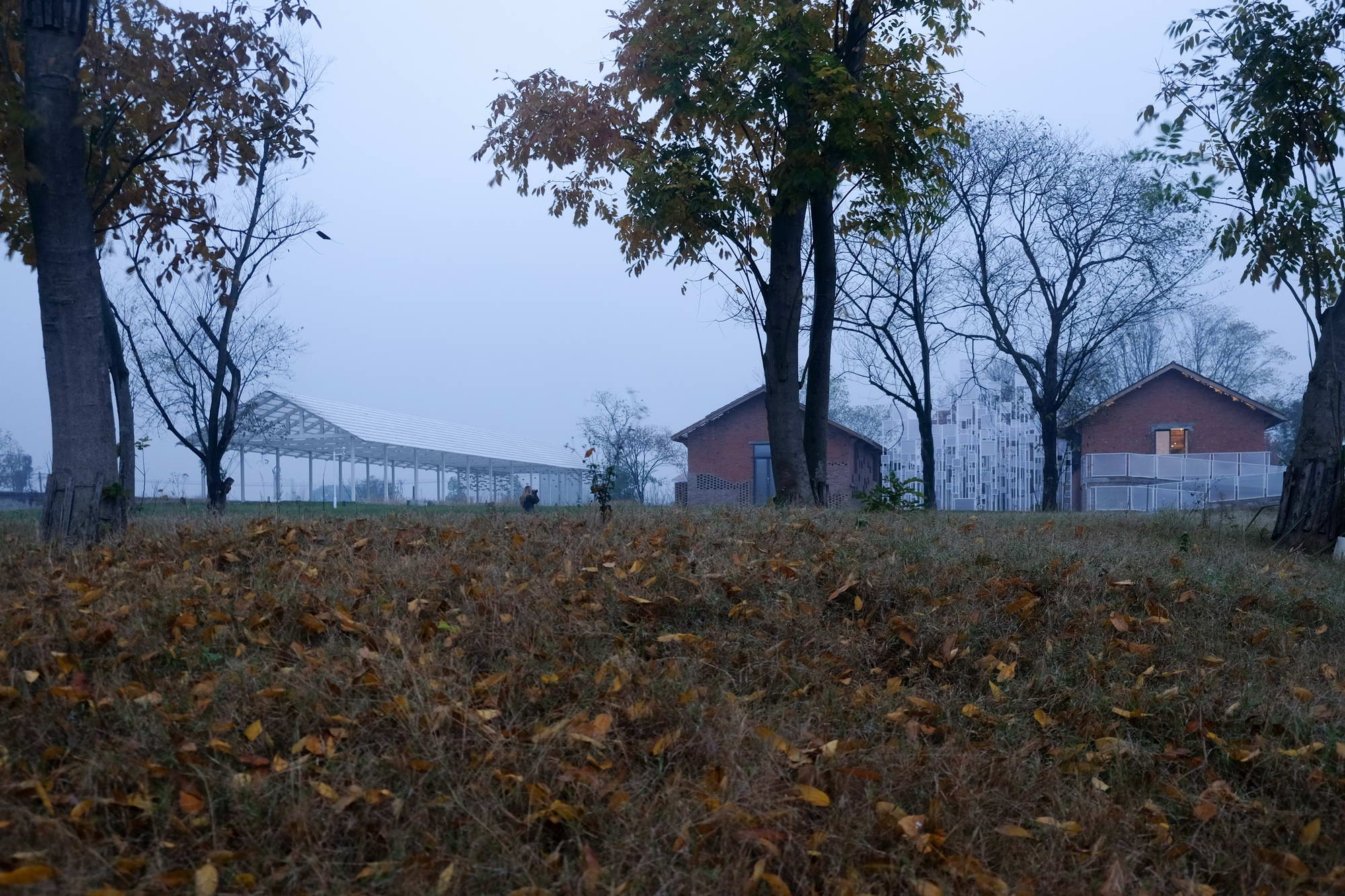
▲雾气中轻薄柔美的建筑
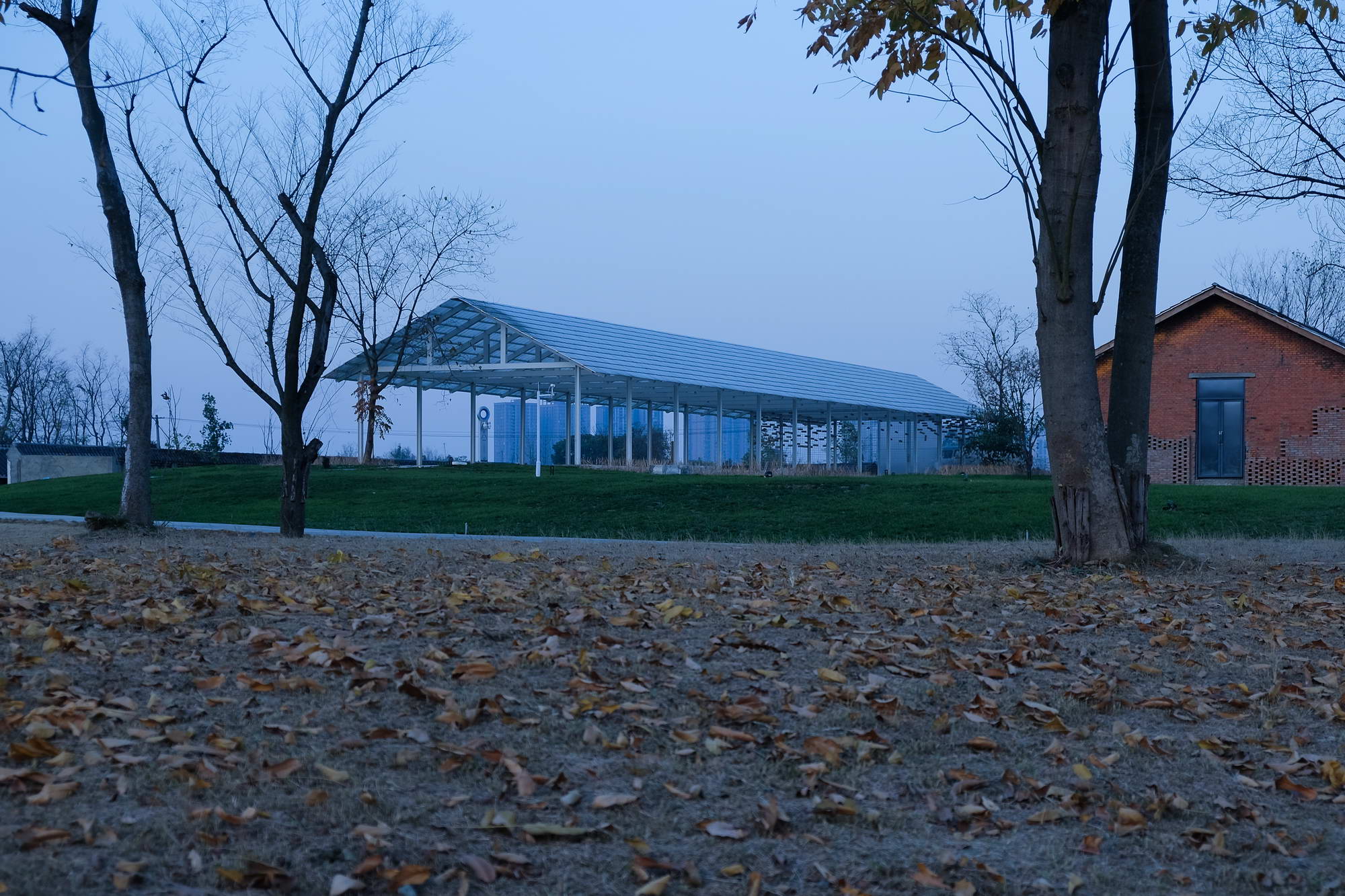
▲融于天际的聚碳酸酯板顶棚
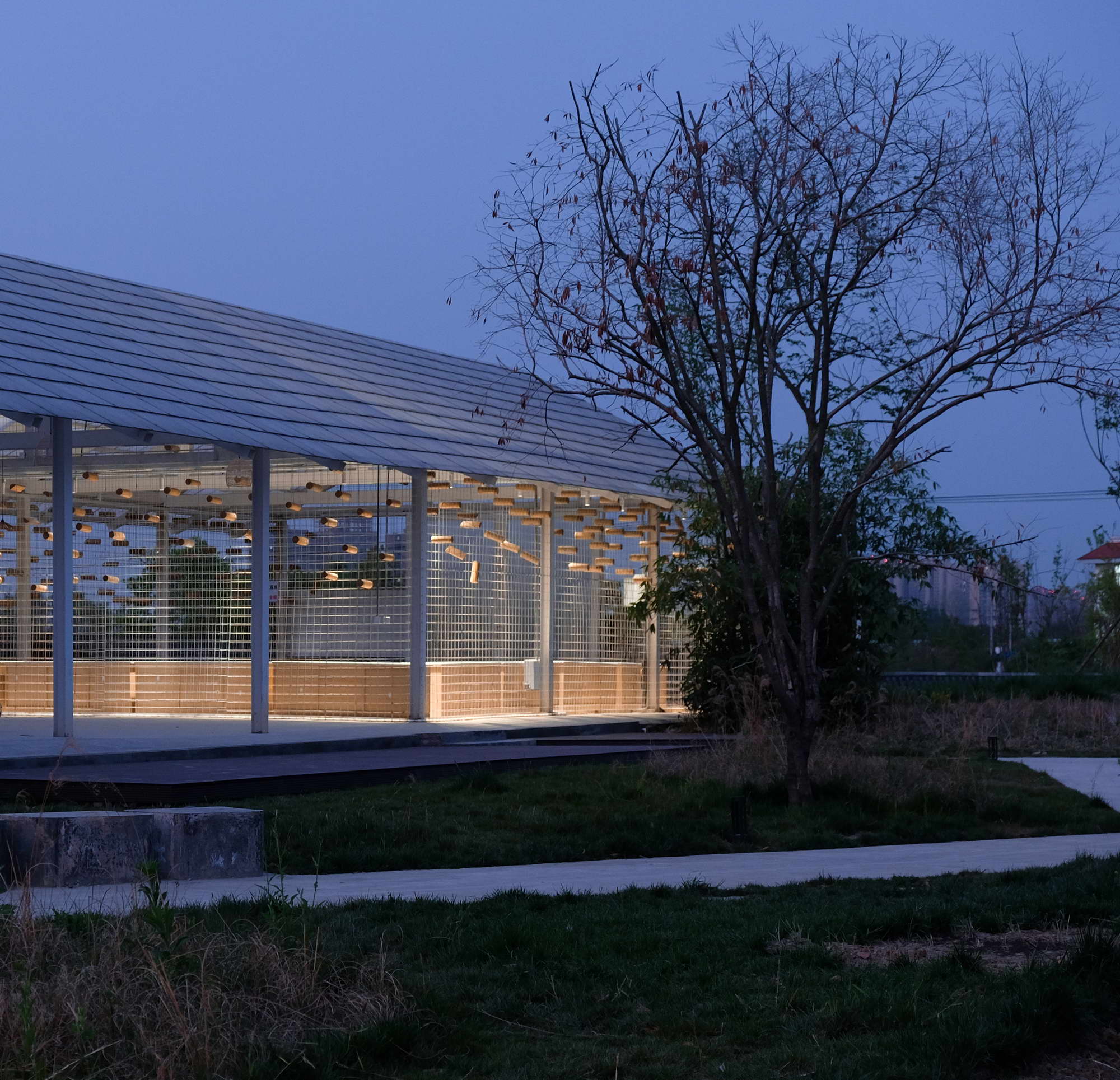
▲金属网与聚碳酸酯板在灯光下的朦胧之美
两栋状态较好的建筑,改造为现代农业和农耕文化展厅。红砖砌体和木构屋架全部保留并进行了局部修缮,屋面统一更换了灰色的陶瓦。同时,将聚碳酸酯板应用于局部顶棚、墙体、门窗,赋予了建筑轻盈朦胧的质感,弱化了红砖砌体带来的厚重感,让建筑呈现出新旧融合共生的状态。
Two buildings in good condition were transformed into exhibition halls of modern agriculture and farming culture. The red brick masonry and wooden roof frame were all maintained and partially repaired, and the gray terracotta tiles were replaced on the roof. At the same time, the polycarbonate panel is applied to part ceiling, wall, doors and Windows, giving the building a light and hazy texture, weakening the thick sense brought by red brick masonry, making the building present a state of integration of old and new.
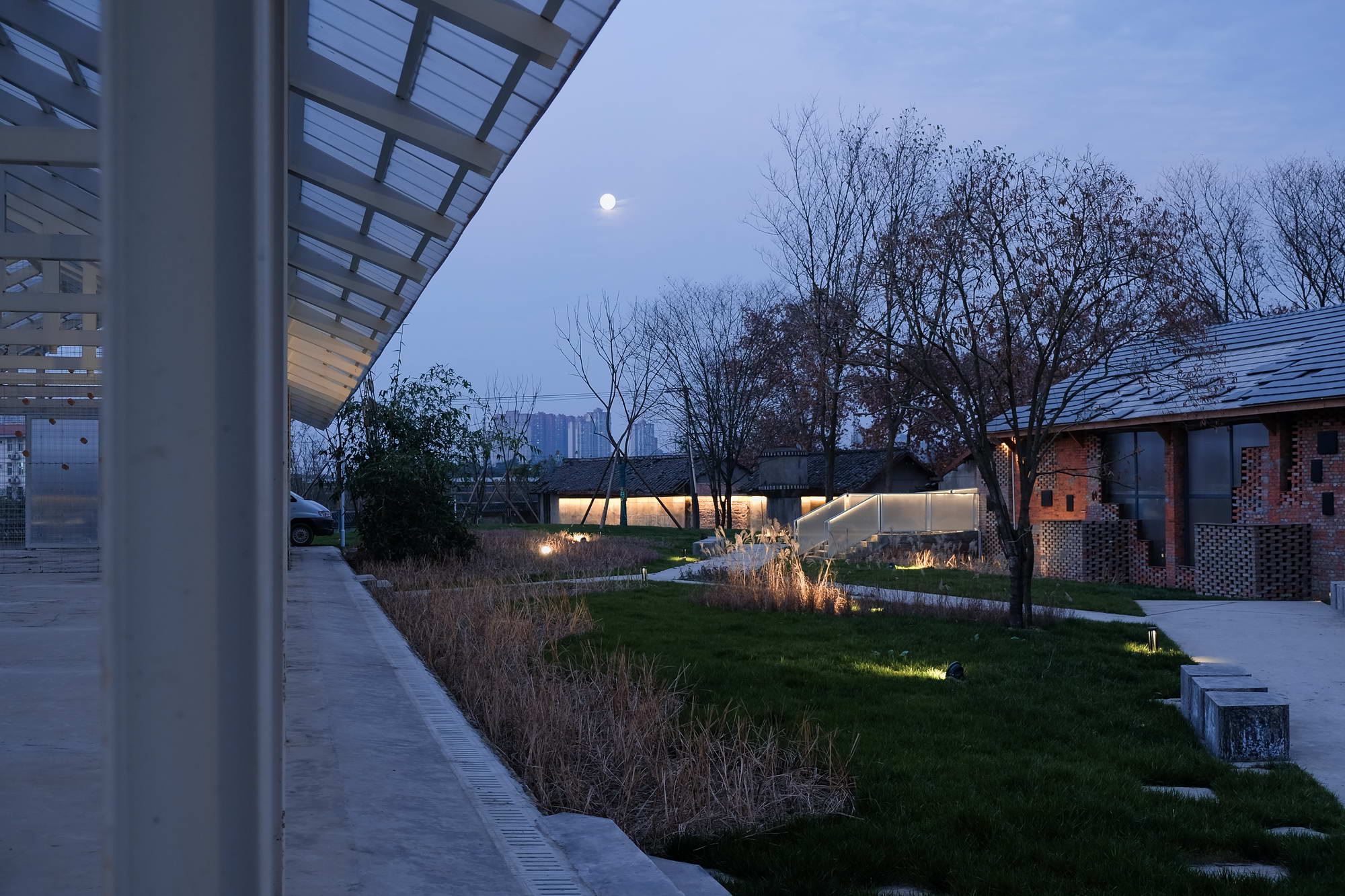
▲废弃混凝土块做的景观汀步

▲薄雾中若隐若现的建筑

▲不锈钢让旧水塔焕发新生
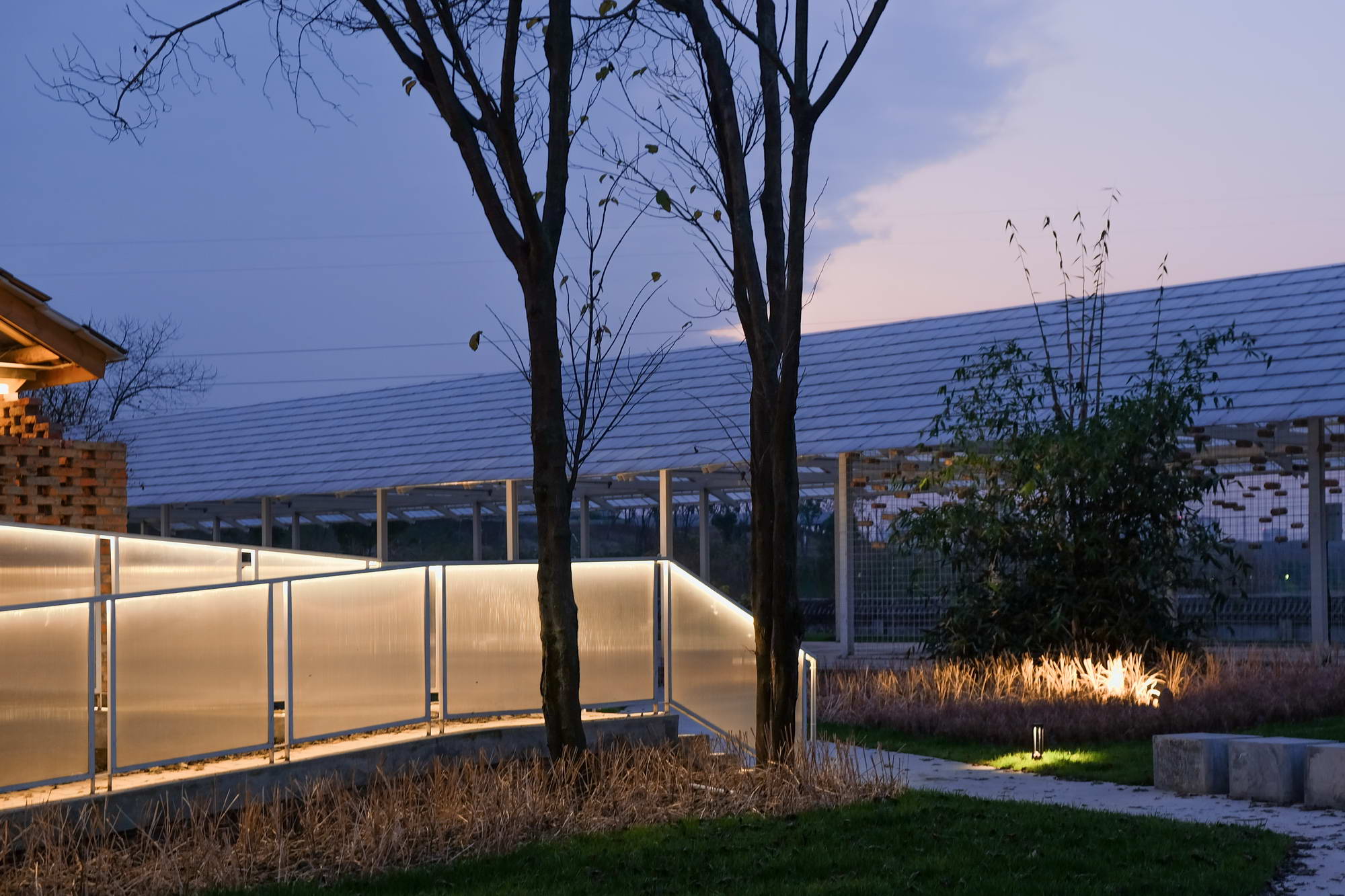
▲灯光与聚碳酸酯板结合形成特殊的视觉效果

▲保留的三角木构屋顶
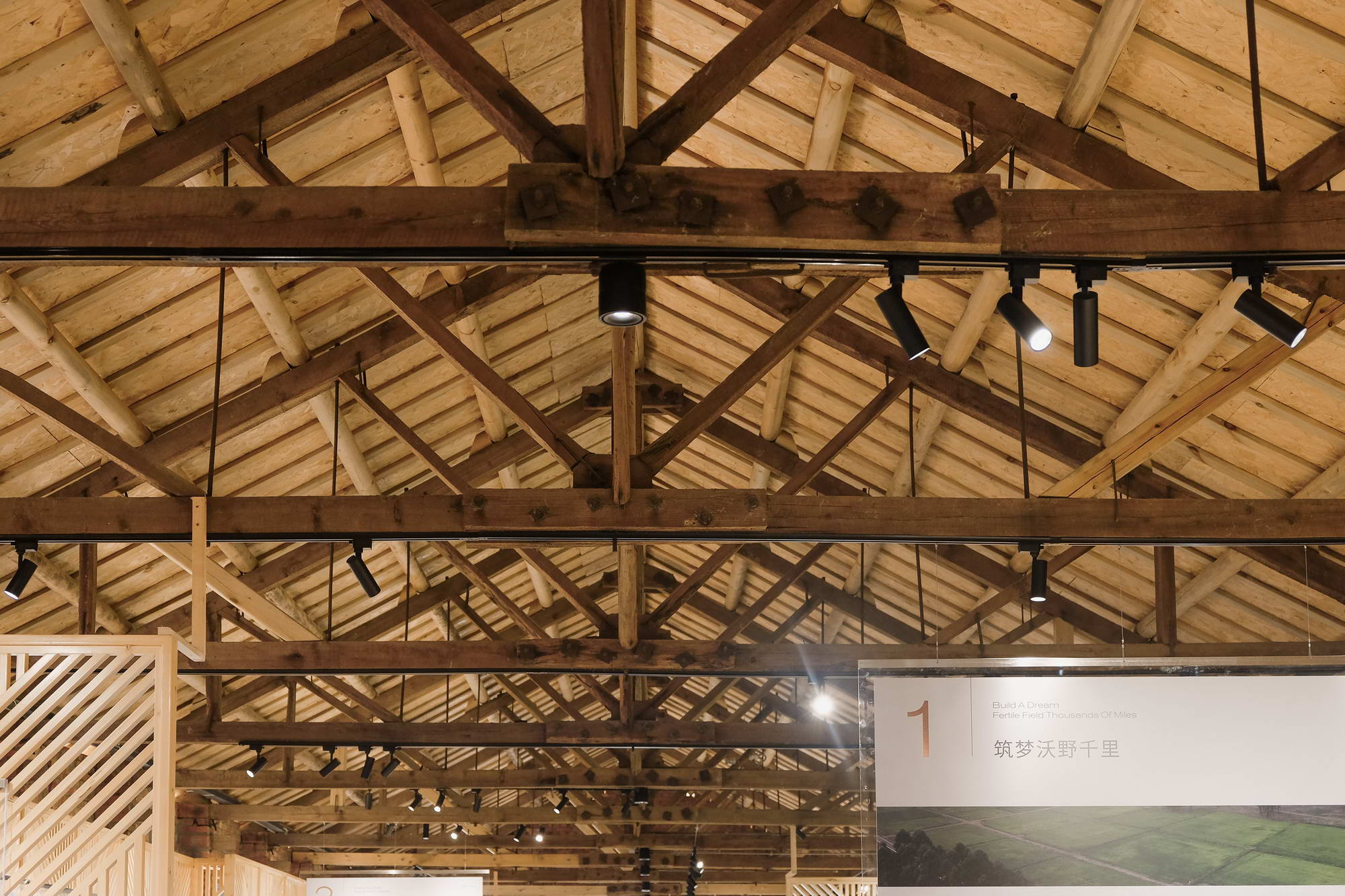
▲保留的三角木构屋顶
